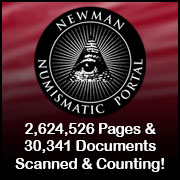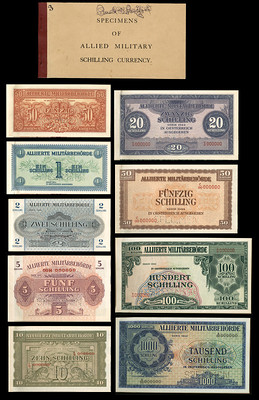
About UsThe Numismatic Bibliomania Society is a non-profit association devoted to the study and enjoyment of numismatic literature. For more information please see our web site at coinbooks.org SubscriptionsThose wishing to become new E-Sylum subscribers (or wishing to Unsubscribe) can go to the following web page link MembershipThere is a membership application available on the web site Membership Application To join, print the application and return it with your check to the address printed on the application. Print/Digital membership is $40 to addresses in the U.S., and $60 elsewhere. A digital-only membership is available for $25. For those without web access, write to: Charles Heck, Treasurer AsylumFor Asylum mailing address changes and other membership questions, contact Chuck at this email address: treasurer@coinbooks.org SubmissionsTo submit items for publication in The E-Sylum, write to the Editor at this address: whomren@gmail.com
BUY THE BOOK BEFORE THE COIN |
- WAYNE'S WORDS: THE E-SYLUM JUNE 21, 2020
- D. BRENT POGUE NUMISMATIC LIBRARY OFFERED
- NEW BOOK: COIN COLLECTING ALBUMS, VOLUME THREE
- NEW BOOK: COINS AND TOKENS OF THE BRITISH WORLD
- NEW BOOK: THE METAL IN BRITAIN'S COINS
- BANKNOTE BOOK HONDURAS CHAPTER
- LARRY L. LEE (1949-2020)
- PHAT NGOC MAI (1960-2020)
- NNP SYMPOSIUM ATTRACTS ADDITIONAL SPEAKERS
- VIDEO: MARY BROOKS INTERVIEWED
- THE COVID-19 COIN SHORTAGE
- ANA SUSPENDS PITTSBURGH WORLD'S FAIR OF MONEY
- CORONAVIRUS UPDATES: JUNE 21, 2020
- NOTES FROM E-SYLUM READERS: JUNE 21, 2020
- THE BANK RESTRICTION NOTE OF 1819
- VOCABULARY TERM: MEDALLION
- DANIEL PARISH, JR. (1842-1914)
- HARVEY STACK'S NUMISMATIC FAMILY, PART 72
- TOWN URGED TO HONOR DR. BENJAMIN RUSH
- MORE ON THE HOLABIRD SUMMER 2020 SALES
- SELECTIONS FROM HOLABIRD SUMMER 2020 SALES
- FEISEL MAY 2020 TOKEN SALE REMINDER
- ARCHIVES INTERNATIONAL AUCTION 60 SELECTIONS
- LYN KNIGHT CURRENCY AUCTIONS UPDATE
- THE PAVILLION DOLLAR
- ON THE TRAIL OF A BUFFALO NICKEL TYPE COIN
- 1921-S ZERBE MORGAN SILVER DOLLARS
- COINS AND HEALTH: AMULETS
- PRIDE MONTH BRITISH MUSEUM NUMISMATICS
- EBAY SELLER'S FAKE MEDAL FACTORY RAIDED
- CNN COVERS TENINO'S 2020 WOODEN MONEY
- FORREST FENN TREASURE PHOTOS RELEASED
Click here to access the complete archive
Click here to unsubscribe (scroll down)
To comment or submit articles, reply to whomren@gmail.com
Content presented in The E-Sylum is not necessarily researched or independently fact-checked, and views expressed do not necessarily represent those of the Numismatic Bibliomania Society.
WAYNE'S WORDS: THE E-SYLUM JUNE 21, 2020
 New subscribers this week include:
Junior Edmundo Sánchez Mancilla (of Celaya, Guanajuato)
and
Ignacio Ruiz Velasco Bongoa (of Mexico City),
courtesy of Adrián González-Salinas; and
Augusto Lopes.
Welcome aboard! We now have 6,110 subscribers.
New subscribers this week include:
Junior Edmundo Sánchez Mancilla (of Celaya, Guanajuato)
and
Ignacio Ruiz Velasco Bongoa (of Mexico City),
courtesy of Adrián González-Salinas; and
Augusto Lopes.
Welcome aboard! We now have 6,110 subscribers.
Thank you for reading The E-Sylum. If you enjoy it, please send me the email addresses of friends you think may enjoy it as well and I'll send them a subscription (but let me know if they are located in the European Union). Contact me at whomren@gmail.com anytime regarding your subscription, or questions, comments or suggestions about our content.
This week we open with a numismatic literature auction from Stack's Bowers, four new books, two obituaries, updates from the Newman Numismatic Portal, and multiple hobby coronavirus updates.
Other topics this week include U.S. Mint Director Mary Brooks, the Bank Restriction Note, previews of upcoming auctions, the Pavillion dollar, the Type I 1913 Buffalo Nickel, the 1921-S Zerbe dollars, amulets, and the fake medal factory.
To learn more about Eliasberg's checklist, Whitman's coin folders and albums, the metal in Britain's coins, the NNP Symposium, the U.S. coin shortage, coin orientation, cleaning vs. conservation, medallions, the Hawaii Wailuku Female Seminary note, the Bank of Duckie Nine Bob note, and Monsieur/Madame D'Eon, read on. Have a great week, everyone!
Wayne Homren
Editor, The E-Sylum
D. BRENT POGUE NUMISMATIC LIBRARY OFFERED
Stacks Bowers Galleries will be offering the D. Brent Pogue Numismatic Library in an upcoming sale. Here's a preview of a few lots courtesy of cataloguer John Pack. Stay tuned for more information in a future issue. Thanks. -Editor
Crosby with Nova Constellatio Cover
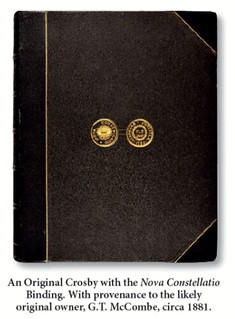 Crosby, Sylvester Sage. The Early Coins of America; and the Laws Governing Their Issue. Comprising also Descriptions of the Washington Pieces, the Anglo-American Tokens, Many Pieces of Unknown Origin of the Seventeenth and Eighteenth Centuries and the First Patterns of the United States Mint. Boston. Sylvester S. Crosby. 1875. Fine. Quarto. Hardbound in black half morocco and black cloth. Ruled in gilt along the leather edges. Distinctive Nova Constellatio on the front cover, in gilt. Spine divided into six panels by low-relief bands, each ruled in gilt. The second and fourth panels with the title, author and date in gilt, the others plain. Faint speckled finish around the page ends. Marbled pastedowns and flyleaves. More than 100 woodcut illustrations, 10 heliotype plates and the usual two heliotype foldouts, one with a small tear noted.
Crosby, Sylvester Sage. The Early Coins of America; and the Laws Governing Their Issue. Comprising also Descriptions of the Washington Pieces, the Anglo-American Tokens, Many Pieces of Unknown Origin of the Seventeenth and Eighteenth Centuries and the First Patterns of the United States Mint. Boston. Sylvester S. Crosby. 1875. Fine. Quarto. Hardbound in black half morocco and black cloth. Ruled in gilt along the leather edges. Distinctive Nova Constellatio on the front cover, in gilt. Spine divided into six panels by low-relief bands, each ruled in gilt. The second and fourth panels with the title, author and date in gilt, the others plain. Faint speckled finish around the page ends. Marbled pastedowns and flyleaves. More than 100 woodcut illustrations, 10 heliotype plates and the usual two heliotype foldouts, one with a small tear noted.
As mentioned in the previous lot description, directions to the bookbinder giving proper placement of the 10 plates were included in the printed volume (found opposite the table of contents). In this volume all plates are properly positioned as intended. Minor splitting inside the cover joints, but the volume remains tight otherwise. Some central pages with a corner bump at the bottom.
A distinctive and desirable binding for this classic numismatic work, a reference with more than a century of useful lifespan. Considered one of the finest American numismatic references and necessary for any working library. This example has a nice provenance to G.T. McCombe, whose faint stamp is noted on the front flyleaf. McCombe of Lockport, New York, advertised as a coin dealer, circa 1881. A collection was sold at auction under his own name by Charles Steigerwalt in January 1883. He was likely the original purchaser of this volume from Crosby. Also included in this is a tipped-in copy of Crosby's own October 1874 announcement that what had been intended as a 10-part series would require an 11th, for the extra cost of $1. There are also two additional small plates of obverses and reverses of eight coins, and a page illustrating and describing the 1783 Nova Constellatio patterns.
Ex G.T. McCombe, circa 1881; Charles M. Johnson (a named consignor to Bowers and Ruddy's February 1978 sale); George Frederick Kolbe, June 2006, lot 25.
The First Four Large-Format Chapman Sales with Plates
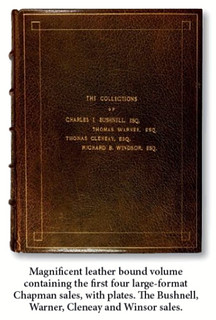 S.H. and H. Chapman. The first four large-format plated catalogs handsomely bound into one volume. Very Fine. Quarto. Hardbound in green full morocco that has largely faded to soft brown on the spine and front cover. Lettered in gilt on the cover and spine, with the likely original owner's name, Samuel Shoemaker, similarly applied at the foot of the spine. Thin gilt fillets around both covers, the inner ones with square accents at the corners. Spine with five raised bands separating it into six panels, five of which are ornamented in thin gilt borders with floral sprays at the corners. The remaining panel (second from top) lettered in gilt with the collection names. Page ends are full gilt. Inside covers feature marbled paper pastedowns, and matching flyleaves and gilt dentelles around. Some loosening along the front marbled flyleaf end paper joint. Slight splitting at the foot of the spine and in its joint with the front cover, at the base. Included sales are as follows:
S.H. and H. Chapman. The first four large-format plated catalogs handsomely bound into one volume. Very Fine. Quarto. Hardbound in green full morocco that has largely faded to soft brown on the spine and front cover. Lettered in gilt on the cover and spine, with the likely original owner's name, Samuel Shoemaker, similarly applied at the foot of the spine. Thin gilt fillets around both covers, the inner ones with square accents at the corners. Spine with five raised bands separating it into six panels, five of which are ornamented in thin gilt borders with floral sprays at the corners. The remaining panel (second from top) lettered in gilt with the collection names. Page ends are full gilt. Inside covers feature marbled paper pastedowns, and matching flyleaves and gilt dentelles around. Some loosening along the front marbled flyleaf end paper joint. Slight splitting at the foot of the spine and in its joint with the front cover, at the base. Included sales are as follows:
Catalogue of the Celebrated and Valuable Collection of American Coins and Medals of the Late Charles I. Bushnell, Esq. June 20-24, 1882. By Bangs & Co. New York. With 12 plates, and prices realized bound in.
Catalogue of the Very Large and Well-Known Collection of Ancient Greek and Roman, English, Foreign and American Coins and Medals of Thomas Warner, Esq. June 9-14, 1884. By Bangs & Co. New York. With 12 plates, and prices realized bound in.
Catalogue of the Large and Valuable Collection of Ancient, Foreign, English and American Coins and Medals of the Late Thomas Cleneay, Esq. December 9-13, 1890. By Davis & Harvey, Auctioneers. Philadelphia. With 12 plates, and prices realized bound in.
Catalogue of the Magnificent Collection of Coins of the United States formed by the late Richard B. Winsor, Esq. December 16-17, 1895. By Davis & Harvey, Auctioneers. Philadelphia. With 10 plates, and prices realized bound in.
Tissue protector sheets at each plate, throughout, and with fresh interiors and no foxing or other unusual signs of handling. A most handsome volume and a very valuable one for research purposes considering the fine plates and many magnificent properties that graced these very important sales.
Ex Samuel Shoemaker; unknown intermediaries; Harry W. Bass, Jr., George Frederick Kolbe, June 1999, lot 106; George Frederick Kolbe, June 2006, lot 479.
Eliasberg's Personal Green's Checklist
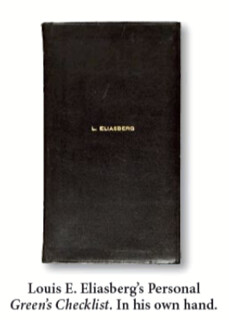 Green, Ben E. The Numismatists' Reference and Check Book. 1926. Third edition, revised by Guttag Brothers. Black leather binding, with gilt lettering on cover, "L. ELIASBERG." Fine. This is the second time we have had the pleasure of offering this small but highly important volume, a key piece of numismatic history documenting the formation of one of the most important collections ever assembled in this country. We present it here, much as we did a decade ago:
Green, Ben E. The Numismatists' Reference and Check Book. 1926. Third edition, revised by Guttag Brothers. Black leather binding, with gilt lettering on cover, "L. ELIASBERG." Fine. This is the second time we have had the pleasure of offering this small but highly important volume, a key piece of numismatic history documenting the formation of one of the most important collections ever assembled in this country. We present it here, much as we did a decade ago:
Measuring a compact 3.75 by 6.5 inches in size, easy enough to tuck into a pocket, it contains 129 numbered pages listing varieties from half cents to double eagles, plus encased postage stamps, private gold issues, and more. Spaces are provided for a basic checkmark to verify ownership, a column for condition or grade (which Louis Eliasberg filled out with a shorthand numbering system), the date purchased, and the source. Coins from the collection of John M. Clapp, and his successor and son, John H. Clapp, are separately listed with the notation they were purchased in July 1942. This is the famous $100,000 transaction in which he purchased the Clapp Collection intact, brokered by Stack's, and based upon an appraisal made by John Zug, a prominent dealer located in Bowie, Maryland.
Other items are entered individually. For example, an 1873 trade dollar in "condition 1" (Proof) was purchased from S.H. Chapman in 1926, an early acquisition. The price paid is given in code. On the other hand, an 1874-CC trade dollar is described as Fine and valued at $1 when acquired from the Clapp Collection. Among miscellaneous examples, a Proof 1856 Flying Eagle cent was bought from the New York Coin Company in 1927 for $60. In 1927 B. Max Mehl furnished dozens of needed small cents in Uncirculated and Proof grades. The Shield and Liberty nickel series seem to have been purchased en masse, in 1927, while the entry for the 1794 silver dollar seems to suggest that the Clapp Collection specimen replaced another example that had been acquired in 1927.
Among gold dollars, an 1855-O in Very Good was purchased from New Netherlands in September 1940 for $2, and an Extremely Fine 1856-S was acquired from Stack's in December 1941 for $8. The especially rare 1861-D gold dollar in Extremely Fine condition was purchased in September 1943 from the Grinnell Collection, portions of which were being auctioned by B. Max Mehl (although the Mehl name is not mentioned). In contrast, the 1860-S gold dollar, described as Extremely Fine, was purchased from Mehl's auction of the William F. Dunham Collection in June 1941 for $9.75.
Among half eagles, he did not enter his purchase of the famous 1822, but made the notation, "Only three known to exist," and that Stack's had advised him that an example would cost $1,000 to $1,500 if one could be found, this notation probably made in the late 1930s. An 1861-C half eagle is graded as VF and was purchased in March 1941 from Syracuse dealer Barney Bluestone for $9.50. The 1854-O double eagle, described as "practically Uncirculated," was acquired in June 1946 from B. Max Mehl for $220, while at the same time a VF example of 1856-O was acquired from the same source for $210.
Among Territorial coins, an 1860 $10 with a view of Pikes Peak, described as "Good," (probably meaning "nice" rather than a specific grade as understood today) was bought from Mehl in November 1940 for $22. In September 1940 Syracuse Stamp and Coin Company provided a Fine 1849 Mormon $5 for $25.
Notations were kept through the mid-1940s, later supplemented for newer issues of current denominations with index cards and slips of paper tucked among the pages. The book is well used, completely intact with regard to notations and impressions, but with a few loose leaves and scotch tape repairs. One might imagine that Mr. Eliasberg carried it in his pocket during the 1930s and through the mid 1940s, referring to it often and making frequent entries.
The Eliasberg Collection is the finest American cabinet ever formed and sold, with regard to completeness and overall quality, and Mr. Eliasberg used this Green's Checklist as a basis for his goal of completion. The present checklist represents an absolutely unique opportunity to acquire a memento that is, in a word, irreplaceable. It is perhaps the most valuable example of those that survive and an extraordinary record of the formation of this most famous collection. An important artifact for the finest numismatic library. Inspired by the same drive and desire for quality and significance that formulated the landmark Pogue Collections of coins and paper money, D. Brent Pogue acquired this at auction in 2010, for $51,750. It is arguably one of the most important numismatic inventories ever created and it is indeed a Pogue quality piece of numismatic history.
Ex Louis E. Eliasberg, Sr.; Louis E. Eliasberg, Jr., by descent; our (Stack's) sale featuring selections from the Louis E. Eliasberg, Jr. Estate, March 2010, lot 454.

NEW BOOK: COIN COLLECTING ALBUMS, VOLUME THREE
David Lange forwarded this press release about the third book in his Coin Collecting Albums series. This one is on the Whitman blue folder line. I'm looking forward to it! -Editor
PennyBoard Press™ Publishes New Entry in David W.
Lange's Acclaimed Series of Books on Coin Albums
Volume Three Features the Products of Whitman 1940-1978
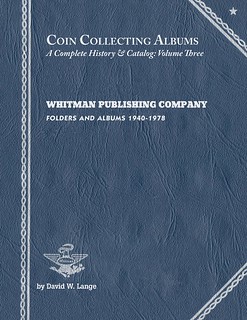 After three years of research and writing, the third volume in David W. Lange's series of books chronicling the publishers of coin albums and their product lines is set for an August 1 release. The book is titled Coin Collecting Albums, A Complete History & Catalog: Volume Three, Whitman Publishing Company Folders and Albums 1940-1978.
After three years of research and writing, the third volume in David W. Lange's series of books chronicling the publishers of coin albums and their product lines is set for an August 1 release. The book is titled Coin Collecting Albums, A Complete History & Catalog: Volume Three, Whitman Publishing Company Folders and Albums 1940-1978.
At 335 pages, it is the largest book in this series to date. There are more than 1500 photos, articles and vintage advertisements, most of them in full color. The book is printed on 100# glossy stock, with an illustrated hard cover and Smythe sewn case binding to last for generations. The book's cover actually reproduces the image of a Whitman coin folder from the 1960s, and the cover text utilizes the very same fonts that are immediately recognizable to veteran coin collectors.
The book relates the history of Whitman Publishing Company from 1916 to the 1990s, when it underwent several changes of ownership to emerge as the still powerful force in the hobby that it is today. All of Whitman's coin folders, albums and cards produced from 1940 through 1978 are given their own chapters, with complete histories and catalogs featuring every single title, edition and variety. These are identified with unique Lange Numbers for easy reference and trading between collectors. Every subtle detail is described and illustrated, revealing how truly complex these seemingly simple products really are.
Among the highlights of this new book are several prototype products from the author's collections that hitherto have been unknown to the hobby. These include the very first Whitman Blue Folder from 1940, an artist's mock-up featuring two different proposed designs, one on either side of its covers. Also fully described and illustrated is the prototype for Whitman's immensely successful Bookshelf line of albums that so dominated this market from 1961 to the late 1970s. The Bookshelf's projected successor is also revealed for the first time, a failed experiment from the mid 1970s that was abandoned in favor of Whitman's present Classic line of albums.
Sections are devoted to the many printing and binding errors the author has collected over several decades, and these are attractively illustrated. Sidebar stories are devoted to the many custom printed folders and albums that Whitman has produced for various coin and medal programs going back as far as 1954.
Finally, an extensive selection of Whitman coin collecting accessories is described and illustrated. These include numerous coin check lists, decal sheets, tubes, storage boxes, coin collecting kits and the very rare “Coin Store” board game from 1962. All of these are displayed in multiple, full color photos that recall the coin hobby during its heyday of the 1960s.
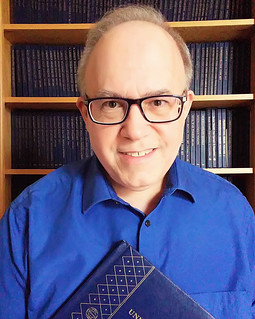 David W. Lange has been collecting coin hobby products and memorabilia for 40 years, and he is the premiere expert in that field. In 2007 Lange launched his series of books relating the history and product lines of various coin supply publishers with his book on vintage coin boards of the 1930s and 1940s. For this project he established his own publishing imprint, PennyBoard Press™, and he thereafter produced a series of books detailing all the publishers of coin folders and albums. Volume One covered the National Coin Album and associated products, while Volume Two was dedicated to albums of the Coin & Currency Institute, specifically Library of Coins and Treasury of Coins. This new volume on Whitman's several product lines is just the latest entry in what is projected to be at least half a dozen titles before the series is complete.
David W. Lange has been collecting coin hobby products and memorabilia for 40 years, and he is the premiere expert in that field. In 2007 Lange launched his series of books relating the history and product lines of various coin supply publishers with his book on vintage coin boards of the 1930s and 1940s. For this project he established his own publishing imprint, PennyBoard Press™, and he thereafter produced a series of books detailing all the publishers of coin folders and albums. Volume One covered the National Coin Album and associated products, while Volume Two was dedicated to albums of the Coin & Currency Institute, specifically Library of Coins and Treasury of Coins. This new volume on Whitman's several product lines is just the latest entry in what is projected to be at least half a dozen titles before the series is complete.
The publication price of Volume Three is $75, but until August 1 Lange is offering a pre-publication sale price of just $65, plus $7 shipping. The book is expected to be ready for delivery at that time.
Books may be purchased by check made out to David W. Lange or via PayPal to davidwlange@outlook.com. His mailing address is POB 110022, Lakewood Ranch, FL 34211. The PennyBoard Press™ website is coincollectingboards.com, and it features extensive information about and photos of vintage coin boards.
The cover alone is genius; I'm looking forward to the book. Like many collectors of my era, I began the hobby pressing Lincoln cents into my blue Whitman folders, and I still have them today. I never heard of the "Coin Store" game, though. Fun awaits! -Editor
To read earlier E-Sylum articles, see:
NEW BOOK: COIN COLLECTING ALBUMS, VOLUME ONE
(https://www.coinbooks.org/esylum_v16n32a02.html)
BOOK REVIEW: COIN COLLECTING ALBUMS V1
(https://www.coinbooks.org/esylum_v18n23a07.html)
NEW BOOK: COIN COLLECTING ALBUMS, VOLUME TWO
(https://www.coinbooks.org/esylum_v19n11a03.html)
BOOK REVIEW: COIN COLLECTING ALBUMS, VOLUME TWO
(https://www.coinbooks.org/esylum_v19n31a12.html)

NEW BOOK: COINS AND TOKENS OF THE BRITISH WORLD
Peter Thompson has authored a new book on the coins and tokens of the British World. From the publisher's web site. -Editor
The Story of the Coins and Tokens of the British World
£39.95
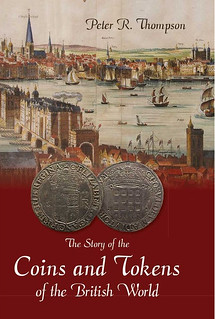 The Story of the Coins and Tokens of the British World. This full colour profusely illustrated 380-page book tells the story of the coins and tokens used by the British to trade across the globe, from the very earliest trade in the 15th century through to the final days of the colonies. It examines the coins of The East India Company, the tokens of private individuals, the coins which are commonly referred to as “colonial coins” and the coins of the Commonwealth - stretching from the Americas to Asia and all points in between. The story of Britain's trade is the story of its influence throughout the world and coins tell that story perfectly – Peter now tells their story in this wonderful new work, a must have for every numismatist. Published April 2020 priced £39.95 – now POST FREE for a limited time.
The Story of the Coins and Tokens of the British World. This full colour profusely illustrated 380-page book tells the story of the coins and tokens used by the British to trade across the globe, from the very earliest trade in the 15th century through to the final days of the colonies. It examines the coins of The East India Company, the tokens of private individuals, the coins which are commonly referred to as “colonial coins” and the coins of the Commonwealth - stretching from the Americas to Asia and all points in between. The story of Britain's trade is the story of its influence throughout the world and coins tell that story perfectly – Peter now tells their story in this wonderful new work, a must have for every numismatist. Published April 2020 priced £39.95 – now POST FREE for a limited time.
For more information, or to order, see:
The Story of the Coins and Tokens of the British World.
(https://www.tokenpublishing.com/shop/product/8045)
To read a CoinsWeekly article, see:
The Story of the Coins and Tokens of the British World
(https://coinsweekly.com/the-story-of-the-coins-and-tokens-of-the-british-world/)
NEW BOOK: THE METAL IN BRITAIN'S COINS
Olivia Marshall of SPINK published an article interviewing Graham Birch, author of the new book The Metal in Britain's Coins. Here's an excerpt - see the complete article online. -Editor
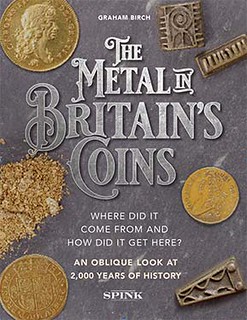 To celebrate the release of his new publication The Metal in Britain's Coins, debut author Graham Birch spoke to Olivia Marshall from our book department, who had a few questions to ask him about the writing process and what inspired this book. It focuses primarily on the coins of Britain through the ages, and where the metal was sourced, but also looks at the history surrounding the coins and the fascinating stories which accompany them.
To celebrate the release of his new publication The Metal in Britain's Coins, debut author Graham Birch spoke to Olivia Marshall from our book department, who had a few questions to ask him about the writing process and what inspired this book. It focuses primarily on the coins of Britain through the ages, and where the metal was sourced, but also looks at the history surrounding the coins and the fascinating stories which accompany them.
Graham: I've always collected stuff – not just coins but fossils, minerals, things like that. Now my wife has a strict one in one out policy when it comes to my collecting! I don't focus on a single aspect of collecting, such as Elizabeth I coins, for example – I tend to go off in different directions! I like to get around the subject and look at it in terms of the history of the object – I might bring in stamps and medals of the period too.
For me, it's all about the historical context of the coin. For example, when I was writing the chapter on the west African origin of the gold in guineas, I spotted in a Spink auction a small collection of original Ashanti brass gold dust weights from Ghana. These are exactly the type of weights that were once used to measure out the gold dust that ultimately went into the minting of Elephant and Castle guineas produced for the Royal African Company in the late 1690s. Unlike the guineas themselves, the weights proved to be cheap at a hammer price of only $50 – and some of them can now be seen on the front cover of my book. This just goes to prove that not everything interesting that you might buy at Spink has to be expensive.
Olivia: When did you decide that you would like to write a book sharing your knowledge about the metal in Britain's coins?
Graham: It sort of crept up on me really – there's a lot of information out there and people have written loads of books about coins – many being tremendously scholarly and specialised. There are also quite a few more general books, such as the Standard Catalogue which tend to skip over the origin of the metals. The things that I discuss in my book can be found in other books – but I realised that I couldn't find a book which had it all in one place, and that's what I felt other people might be interested in too. It was also important for me to bring in the history, sometimes lesser-known history, and also talk about some of the medals and other things relating to the coins. I felt that there was a bit of a gap in the market for this! Another motivation behind the book was to put the record straight on the origins of some of Britain's most popular coins. Take the LIMA coins for example – despite overwhelming evidence to the contrary, many numismatists and collectors persist in the belief that it was Commodore Anson's voyage around the world which was the source of the gold and silver for the minting. This error is endlessly repeated in publications and auction catalogues – and hopefully my book will convince people of the real story and point them back in the right direction.
Olivia: Why do you have a particular interest in the origin of British coins? Do you think it is the rich history of the metal which you find so fascinating?
Graham: I'm sure that other countries have plenty of history behind their coins too but I just happen to know a lot about British ones, and with my background in minerals and mining, I find the history of the metal fascinating. So I knew I wanted it to be about British coins primarily, and the history behind their origin, but I didn't plan the title ahead of writing!
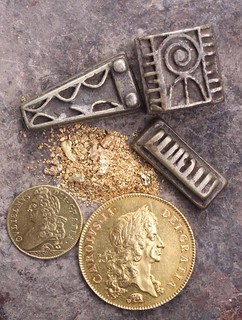
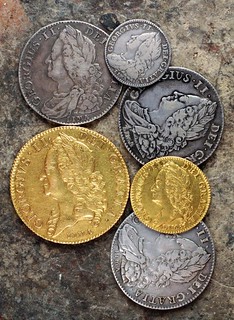
Elephant and Lima coinage
Olivia: Do you think that your book is suitable for people who are completely new to the coin-collecting community? Can beginners read this as an introduction to their numismatic journey?
Graham: There is certainly information in it for people who have never been exposed to coin collecting – I think it will appeal to people who know nothing about coins, but also people who know a lot about coins though maybe not these particular stories – for example the Mine Adventurers, the Hermione, Thomas Bushell. I hope too that it can be enjoyed by people with a general interest in history as well as coin collectors. This book is for everybody.
The Metal in Britain's Coins will be published by Spink Books in June 2020. For further information or to order copies please visit our website, www.spinkbooks.com, or email books@spink.com.
To read the complete article, see:
MEET THE AUTHOR - AN INTERVIEW WITH GRAHAM BIRCH
(https://insider.spink.com/2020/06/13/interview-with-graham-birch/)

BANKNOTE BOOK HONDURAS CHAPTER
Owen Linzmayer publishes The Banknote Book, a useful, constantly updated electronic reference. On June 19, 2020 he announced via email the availability of the Honduras chapter. It's available for $9.99. -Editor
Honduras (Central America)
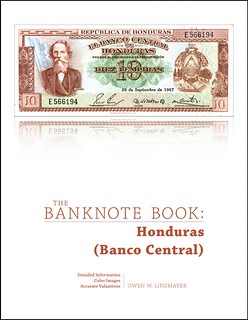 This 26-page catalog covers notes issued by the Banco Central de Honduras (Central Bank of Honduras) from 1950 to present. Coverage of the earlier issuers will be added in the future. Published 14.06.2020.
This 26-page catalog covers notes issued by the Banco Central de Honduras (Central Bank of Honduras) from 1950 to present. Coverage of the earlier issuers will be added in the future. Published 14.06.2020.
Currently 290 chapters of The Banknote Book have been published as individual high-resolution PDF files. This represents a total of 6,807 pages covering 62,020 types and varieties.
For more information on The Banknote Book, see:
http://www.banknotenews.com/banknote_book/
banknote_book.php

LARRY L. LEE (1949-2020)
Pete Smith forwarded an obituary for longtime Florida coin dealer Larry Lee. Thanks. Here's an excerpt. -Editor
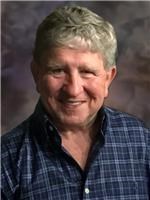 Larry L. Lee a prominent businessman, loving husband, stepfather, papa, brother, uncle, boss and friend passed away Sunday, June 7, 2020 at his home.
Larry L. Lee a prominent businessman, loving husband, stepfather, papa, brother, uncle, boss and friend passed away Sunday, June 7, 2020 at his home.
Larry was born December 6, 1949 in Lynn Haven, Florida to Thelmer and Gracie Lee of Springfield.
Larry was the owner of Coin and Bullion Reserves in Panama City for over 48 years. His wife Patricia worked by his side for 30 years building a legacy that will last for decades. Larry had a passion for coins and jewelry and his passion lead him down many roads.
He was a lifetime member of the Prestigious ANA, member of Professional Numismatic Guild, Florida United Numismatic, Numismatic Guaranty Corp, and Professional Coin Grading Service. Larry was also nominated for the Harry J. Forman Numismatic dealer of the year award by the American Numismatic Association in 2018.
To read the complete article, see:
Larry L. Lee
(https://obits.newsherald.com/obituaries/newsherald/obituary.aspx?n=larry-l-lee&pid=196318395)
Jeff Garrett writes:
"I have known Larry Lee since the late 1970's. Larry became one of the dominant coin dealers in the state of Florida. Over the years he was able to develop his business which was primarily bullion, into one of the nation's largest rare coin dealerships. Larry was an astute business man with a passion for life. He traveled the world extensively, and always understood that life was short. Over the years we did untold millions of business together. In the 1980's I sold him a deal of over 200,000 circulated Morgan silver dollars. In 2013 we purchased the fabled 1913 Liberty Nickel together.
"Larry was always fair and a man of his word. The only people who ever had an issue with Larry, were the ones that did not keep there word with him. He greatly valued honesty and it was the basis of his business and life.
"I greatly miss his words of wisdom."
David Lisot passed along this 2013 video. -Editor
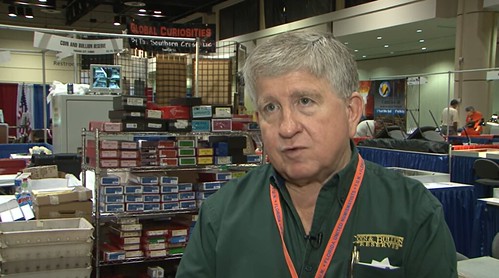
David writes:
"I interviewed him at the Summer FUN Convention just after he had purchased the 1913 Nickel. He was a great guy and numismatist. Sorry for his passing."
To watch the video, see:
Numismatic Personality: Larry Lee, Coin and Bullion Reserve, July 13, 2013. VIDEO: 7:35.
(https://www.youtube.com/watch?v=PsgVCLqQA8A&t=42s)
PHAT NGOC MAI (1960-2020)
Howard Daniel submitted these thoughts on his friend Phat Ngoc Mai, a top numismatist in Viet Nam who passed away on June 15. -Editor
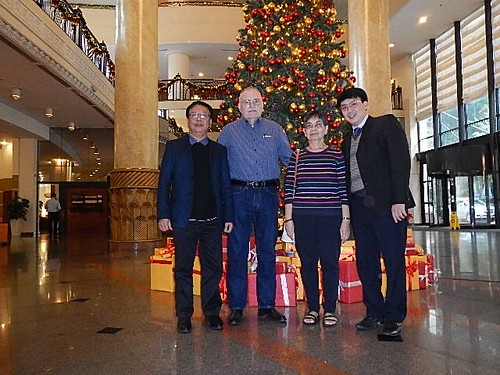
Mr Phat Ngoc Mai (name in American sequence) is left, my wife (Phung Thi Daniel) and I (Howard A. Daniel III) in the center, and his banker right who would translate for him because he could not say everything he wanted to say in English so he would tell the banker and he would translate to English. This photo was taken in the lobby of the Hilton Hanoi Hotel in Hanoi just before Christmas of 2015. I first met him in 1995 when he spoke hardly any English but it got better every year I knew him.
Past owner of the Viet-Laos Civil Engineering Construction Company which built roads, bridges and other infrastructure in remote areas of Laos. When I did not know my way around Hanoi, he would give me one of his firm's Land Rovers with a driver to drive me around the city and its suburbs. He became “the” numismatist of Viet Nam and Lao numismatics in Viet Nam. He was always available to me and many other numismatists to discuss numismatics. He was a very generous man and when you departed, he would often gift you with a nice numismatic piece.
His home was in the Hanoi suburbs but he bought a condo in the Platinum Residences in Hanoi which he converted into his office and meeting room so numismatists could more easily visit him. Once you entered the foyer, he had a long table installed in what was the living and dining room which could easily sit 20+ people. He held meetings there of numismatists where they could share their knowledge with others. I was often amazed at the collections of the attendees. Because smoking bothered me, he would not smoke and had everyone else not smoke when I was at a meeting.
It was very difficult several years ago to officially do anything in numismatics in Viet Nam. In the old communist ideology, philately was the hobby for the people and numismatics was for capitalists. He was instrumental in making numismatics officially acceptable for the Vietnamese people. He created the first numismatic club and then other clubs were created all over the country. He also was approved to publish a quarterly magazine, Vietnam Numismatics, which is distributed worldwide. I am hoping that someone in Viet Nam will keep the magazine publishing in the future.
He was born on June 8, 1960 and passed on June 15, 2020 in Hanoi, Viet Nam. A few days before he passed away, he had a stroke and went into a coma. The news was quickly passed around in Viet Nam and to the world. I am very, very sad to know that he is gone and his friends can no longer visit him.
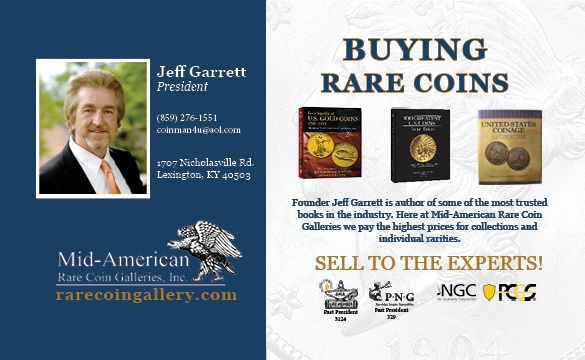
NNP SYMPOSIUM ATTRACTS ADDITIONAL SPEAKERS
The Newman Numismatic Portal is sponsoring its first symposium at the end of August. NNP Project Coordinator Len Augsburger provided this update. Thanks. -Editor
NNP Symposium Attracts Additional Speakers
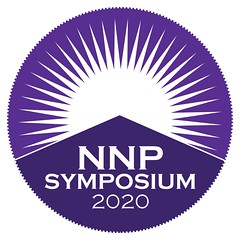 The NNP Symposium, an online numismatic gathering scheduled for August 28-29, continues to increase its offering of presentations. Speakers added this week include Rob Rodriguez, whose topic is “The Morris 1792 So-Called Silver Center Cent,” Pierre Fricke, who will speak on collecting Confederate paper money, Charles Morgan, speaking on ways to modernize the current numismatic market, and many others. A few presentation slots are still open but are going quickly. Speakers may inquire at
http://nnpsymposium.org/for-presenters. Symposium attendees will enjoy a wide variety of content on many aspects of numismatics, and, as this is a virtual event, are free to come and go as they please while following their favorite speakers.
The NNP Symposium, an online numismatic gathering scheduled for August 28-29, continues to increase its offering of presentations. Speakers added this week include Rob Rodriguez, whose topic is “The Morris 1792 So-Called Silver Center Cent,” Pierre Fricke, who will speak on collecting Confederate paper money, Charles Morgan, speaking on ways to modernize the current numismatic market, and many others. A few presentation slots are still open but are going quickly. Speakers may inquire at
http://nnpsymposium.org/for-presenters. Symposium attendees will enjoy a wide variety of content on many aspects of numismatics, and, as this is a virtual event, are free to come and go as they please while following their favorite speakers.
The NNP Symposium is free, but attendees and speakers must register in order to receive the meeting access codes. We hope to “see” you there!
Link to NNP Symposium registration:
https://nnpsymposium.org/
Link to NNP Symposium presentations list:
https://nnpsymposium.org/schedule
To read the earlier E-Sylum article, see:
NEWMAN PORTAL ANNOUNCES FIRST NNP SYMPOSIUM(https://coinbooks.org/v23/esylum_v23n24a11.html)
VIDEO: MARY BROOKS INTERVIEWED
These are selections from the David Lisot Video Library that feature news and personalities from the world of coin collecting. David has been attending coin conventions since 1972 and began videotaping in 1985. The Newman Numismatic Portal now lists all David's videos on their website at:
https://nnp.wustl.edu/library/multimediadetail/522852
Here's an interview with U.S. Mint Director Mary Brooks. -Editor
PNG Living History: Mary Brooks, 8/15/1988
Ed Rochette, Interviewer
David Lisot, Video Producer
Sponsored by Professional Numismatists Guild.
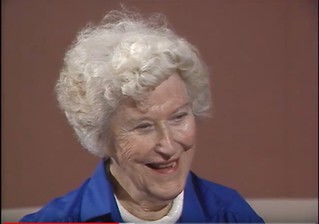 Ed Rochette , Executive Director of the American Numismatic Association, interviews former United States Mint Director Mary Brooks who followed in the footsteps of Eva Adams. She shares what it was like in 1969 in Washington, DC and how she restored the original furniture in the Mint office. She talks about Richard Nixon and how she initiated the Mint Store in the White House. She had an interest in teaching young people about numismatics and talks about coin collecting, the Bicentennial and more.
Ed Rochette , Executive Director of the American Numismatic Association, interviews former United States Mint Director Mary Brooks who followed in the footsteps of Eva Adams. She shares what it was like in 1969 in Washington, DC and how she restored the original furniture in the Mint office. She talks about Richard Nixon and how she initiated the Mint Store in the White House. She had an interest in teaching young people about numismatics and talks about coin collecting, the Bicentennial and more.
An excerpt of the video is available for viewing on the Coin Television YouTube Channel at:
https://youtu.be/zafuhBLC1bo

THE COVID-19 COIN SHORTAGE
JP Koning passed along this service update from the U.S. Federal Reserve. Thanks. -Editor
Temporary coin order allocation in all Reserve Bank offices and Federal Reserve coin distribution locations effective June 15, 2020
The COVID-19 pandemic has significantly disrupted the supply chain and normal circulation patterns for U.S. coin. In the past few months, coin deposits from depository institutions to the Federal Reserve have declined significantly and the U.S. Mint's production of coin also decreased due to measures put in place to protect its employees. Federal Reserve coin orders from depository institutions have begun to increase as regions reopen, resulting in the Federal Reserve's coin inventory being reduced to below normal levels. While the U.S. Mint is the issuing authority for coin, the Federal Reserve manages coin inventory and its distribution to depository institutions (including commercial banks, community banks, credit unions and thrifts) through Reserve Bank cash operations and offsite locations across the country operated by Federal Reserve vendors.
The Federal Reserve is working on several fronts to mitigate the effects of low coin inventories. This includes managing the allocation of existing Fed inventories, working with the Mint, as issuing authority, to minimize coin supply constraints and maximize coin production capacity, and encouraging depository institutions to order only the coin they need to meet near-term customer demand. Depository institutions also can help replenish inventories by removing barriers to consumer deposits of loose and rolled coins. Although the Federal Reserve is confident that the coin inventory issues will resolve once the economy opens more broadly and the coin supply chain returns to normal circulation patterns, we recognize that these measures alone will not be enough to resolve near-term issues.
Consequently, effective Monday, June 15, Reserve Banks and Federal Reserve coin distribution locations began allocating coin inventories. To ensure a fair and equitable distribution of existing coin inventory to all depository institutions, effective June 15, the Federal Reserve Banks and their coin distribution locations began to allocate available supplies of pennies, nickels, dimes, and quarters to depository institutions as a temporary measure. The temporary coin allocation methodology is based on historical order volume by coin denomination and depository institution endpoint, and current U.S. Mint production levels. Order limits are unique by coin denomination and are the same across all Federal Reserve coin distribution locations. Limits will be reviewed and potentially revised based on national receipt levels, inventories, and Mint production.
To read the complete article, see:
Strategic Allocation of Coin Inventories
(https://www.frbservices.org/news/communications/061120-strategic-allocation-of-coin-inventories.html)
Here's a report from the Wall Street Journal. -Editor
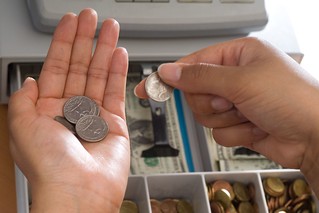 Coins are in short supply in the U.S. and the central bank is working to fix the situation, Federal Reserve Chairman Jerome Powell said.
Coins are in short supply in the U.S. and the central bank is working to fix the situation, Federal Reserve Chairman Jerome Powell said.
Speaking Wednesday before the House Financial Services Committee as part of broader testimony on the outlook for the economy and monetary policy, the Fed leader tied the coin shortage to the broader fate of the economy as businesses and consumers navigate the coronavirus pandemic.
“With the partial closure of the economy, the flow of coins through the economy has gotten all…it's kind of stopped,” Mr. Powell said. “We are well aware of this and are working with the Mint and we are working with the reserve banks. And as the economy reopens, we are seeing coins begin to move around again.
Some Fed officials have said the surge in demand for cash isn't surprising and mirrors other periods of stress, when households and others seek to hold more physical money in case of problems accessing banks or cash machines.
Coins would almost certainly be a minor consideration in all of this. But even as electronic payments dominate money usage and banking in the U.S., the use of physical money is still significant, and it can matter most to lower-income people and minorities, some of whom lack bank accounts. For some, the inability to make exact change could be a real issue.
“We feel like we are making progress” in fixing the situation, Mr. Powell added.
To read the complete article (subscription required), see:
U.S. Experiencing Coin Shortage Due to Coronavirus Pandemic, Powell Says
(https://www.wsj.com/articles/u-s-experiencing-coin-shortage-due-to-coronavirus-pandemic-powell-says-11592429051)
Thanks to Len Augsburger and others who forwarded the story. -Editor
To read other articles, see:
Americans face new coronavirus challenge: a shortage of coins
(https://www.reuters.com/article/us-usa-fed-powell-coins/americans-face-new-coronavirus-challenge-a-shortage-of-coins-idUSKBN23O36U)
Hang on to your nickels and dimes, the pandemic has created a coin shortage
(https://www.washingtonpost.com/business/2020/06/17/coin-shortage-economy-fed/)
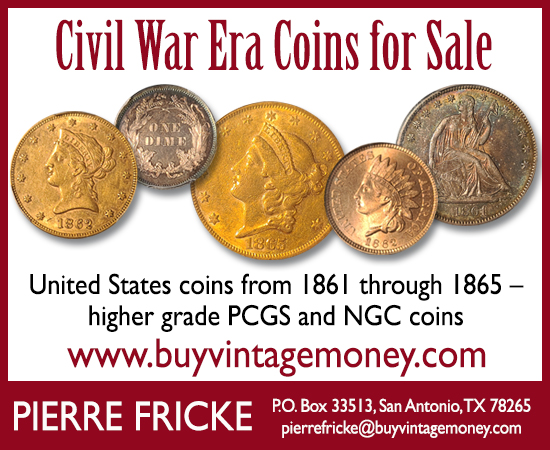
ANA SUSPENDS PITTSBURGH WORLD'S FAIR OF MONEY
On June 16, 2020 the ANA announced the suspension of the 2020 Pittsburgh World's Fair of Money, leaving open the possibility of alternate sites and/or dates. Here's the announcement. -Editor
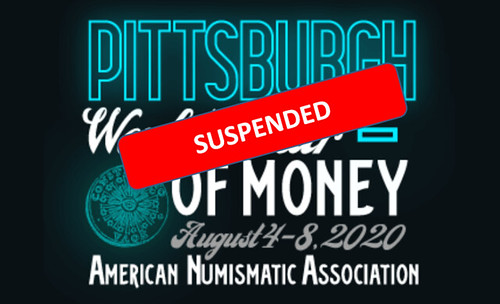
ANA Board of Governors to Consider Alternate Options
The American Numismatic Association (ANA) announced today the suspension of the 2020 World's Fair of Money®. The show, originally scheduled for August 4-8 in Pittsburgh, Pennsylvania, is the largest annual coin and paper-currency event in the United States.
The ANA Board of Governors has been deliberating the impact of COVID-19 restrictions on the show and whether aggressive mitigation requirements to ensure the safety of attendees made continuing with the Pittsburgh event feasible. Current State of Pennsylvania guidelines restrict indoor gatherings to a maximum of 250 people at any one time. The World's Fair of Money typically attracts upward of 10,000 people during its 5-day smorgasbord of educational offerings, live auctions, affiliated club meetings, and a bourse floor with nearly a thousand dealers and government mints from around the world.
The Board resolved in a vote on June 16 to postpone the show and to consider alternate sites and/or dates for the 2020 World's Fair of Money.
According to Jennifer Ackerman, ANA conventions director, because of Pennsylvania's restrictions on indoor gatherings, “none of the usual World's Fair of Money offerings would be possible at the Pittsburgh show. No exhibits, no educational programming, no Kids Zone, no club meetings, no banquet, and a significantly reduced bourse. Our team has been in nearly daily conversations with the convention center, but it's become evident that they are unable to fulfill their contractual obligations.”
Pittsburgh World's Fair of Money Committee Chair Tom Uram noted the Pennsylvania Association of Numismatists (PAN) had “anticipated a convention that would showcase the ANA and the city of Pittsburgh. But based on our analysis and review of all relevant information – the diminished show experience for attendees, health and safety issues, security, financial impact and the significant unknown outside variables – the host committee recommended that the ANA Board not hold the Pittsburgh World's Fair of Money,” he says.
Since 1891, the American Numismatic Association's convention has only been cancelled twice; in 1918 during the flu pandemic and again in 1945 because of World War II.
“The decision to postpone the World's Fair of Money was very emotional and extremely difficult,” says ANA President Steve Ellsworth. “The convention staff and the Pittsburgh organizing committee worked hard to make the show a reality. PAN went beyond all expectations to deliver what would have been a fantastic event, and I'm deeply disappointed that the collecting community won't be able to experience the results of their efforts. I know we will return to Pittsburgh in the not-so-distant future. In the meantime, we will pursue opportunities to host the event in another city in the weeks ahead.” Options briefly discussed include The Broadmoor in Colorado Springs, Colorado, and the Mountain America Expo Center and Salt Palace Convention Center, both of which are located in Salt Lake City, Utah.
“During these trying and socially-isolated times, we were looking forward to reconnecting with our fellow numismatists,” says ANA Executive Director Kim Kiick. “We're disappointed we won't be seeing everyone in Pittsburgh but are working hard to create other opportunities to connect.”
“The ANA and PAN recognize that dealers, clubs and many individuals may have already made plans and reservations in Pittsburgh for August,” says Ackerman. Hotel room reservations within the reserved block in the Omni William Penn, Embassy Suites by Hilton, Courtyard or Westin Convention Center that were made through VisitPittsburgh Housing Services automatically will be cancelled within 48 hours; do not contact the hotel directly. For those that made lodging accommodations directly with a hotel, cancellation will need to be made directly with those entities. Lodging questions should be directed to housing@visitpittsburgh.com.
Dealers will be contacted directly by the ANA convention team. “To mitigate the influx of calls and emails, dealers will be contacted by phone within the next week to discuss the option of a future credit towards an ANA show or a refund,” Ackerman says. “The ANA convention staff will be reaching out to every dealer who reserved a table at Pittsburgh. Your patience is much appreciated.”
CORONAVIRUS UPDATES: JUNE 21, 2020
Here's the latest compilation of coronavirus updates from readers, organizations and companies. -Editor
Baldwin's Reopening
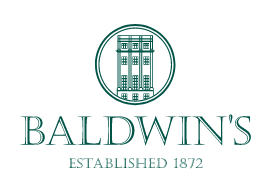 "On behalf of everybody at Baldwin's, I sincerely hope that the last couple of months have not been too trying for you and your hobbies have given you plenty of reason to smile.
"On behalf of everybody at Baldwin's, I sincerely hope that the last couple of months have not been too trying for you and your hobbies have given you plenty of reason to smile.
"Following the Government's most recent announcements, I am very pleased to be able to update you on our plans for reopening our new and much-improved store at 399 Strand, while doing all we can to keep both our customers and staff safe.
"From June 15th we will be open for people to visit us by pre-arranged appointment, followed two weeks later on June 29th by the full opening of all three floors of the building. This includes our new Baldwin's coin room and display areas as well as a completely new shop on the ground floor.
"We are very excited by this but rest assured, we will be implementing a range of measures to keep everybody safe including the use of floor markers, hand sanitiser, plastic screens and additional cleaning. We will also continue to minimise staff levels on site while doing all we can to offer you the very best level of service."
Lithuania Mints Pandemic Coin
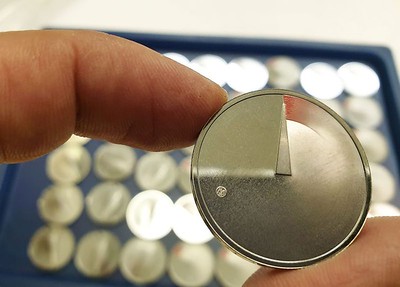
"Lithuania began minting a collector's coin, dubbed a "coin of hope", on Wednesday to mark the year of the new coronavirus and pay tribute to doctors, nurses and others who helped the country weather the pandemic.
"The coin has the phrase "after darkness, I hope for light" written around its edge in Latin. It features a shaft of light illuminating the year 2020 and spelling out SOS, the international distress signal, in shadow.
"We wanted to say 'thank you' to the medics, the medical workers, public transport drivers, to thank teachers who worked at a distance, the shop workers and those who stayed in self- isolation and kept the virus from spreading," said Asta Kuniyoshi, deputy governor of Lithuania's central bank."
To read the complete article, see:
Lithuania mints 'coin of hope' to remember year of pandemic
(https://wkzo.com/news/articles/2020/jun/17/lithuania-mints-coin-of-hope-to-remember-year-of-pandemic/1030421/)
To read the earlier E-Sylum article, see:
CORONAVIRUS UPDATES: JUNE 14, 2020
(https://www.coinbooks.org/v23/esylum_v23n24a12.html)
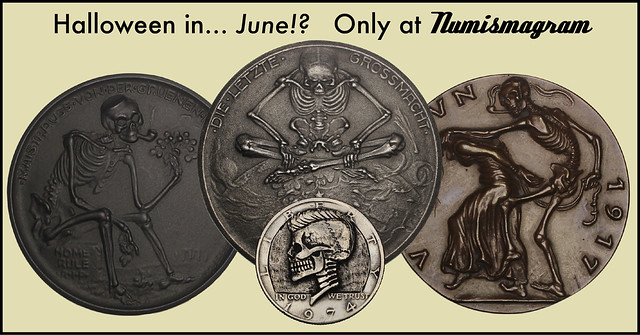
NOTES FROM E-SYLUM READERS: JUNE 21, 2020
On the "United States Mint" Silver Dollar Collection
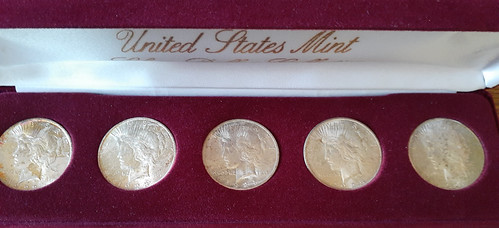
Julian Leidman writes:
"I agree that the US mint silver dollar set was something that was done privately and had nothing to do with the US Mint."
Thanks. -Editor
To read the earlier E-Sylum article, see:
NOTES FROM E-SYLUM READERS: JUNE 14, 2020 : Query: United States Mint Silver Dollar Collection
(https://www.coinbooks.org/v23/esylum_v23n24a13.html)
The Case of the Pickled Planchet
Regarding Dick Hanscom's question about brightening a dark annealed planchet,
Erik Goldstein writes:
"I'd offer: Pickle it, in an acid solution."
Thanks - worth a try! -Editor
To read the earlier E-Sylum article, see:
NOTES FROM E-SYLUM READERS: JUNE 14, 2020 : Query: Brightening an Annealed Bronze or Brass Planchet
(https://www.coinbooks.org/v23/esylum_v23n24a13.html)
More on Coin Orientation

Dave Lange writes:
"I found Ron Guth's commentary on the correct orientation of coin photos to be very interesting. I load many of the photos that NGC's Imaging Department takes for Coin Explorer and VarietyPlus, and one coin type that is almost always delivered with an incorrect rotation is the common reverse design of Coronet Liberty quarter eagles through eagles. It seems that everyone wants the eagle to stand up straight, with the shield upright as well, but examination of the coin reveals that this was not the artist's intent. The legend stops flanking the denomination are clearly meant to align on a single horizontal plane, and doing this turns the eagle clockwise in the die, or counterclockwise to a viewer of the coin. The denomination and legends are thus balanced, while the eagle is leaning to one side.
"I'm attaching a couple of examples taken from Coin Explorer to illustrate this point."
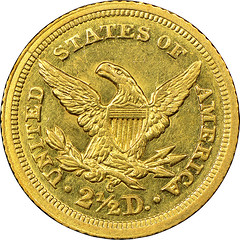
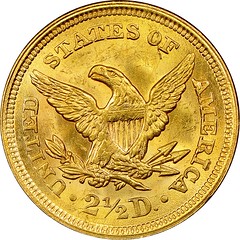
Wrong and Right eagle orientations
Thank you. Great observations. It pays to heed the artist's intent. I like the second orientation much better. -Editor
To read the earlier E-Sylum article, see:
RON GUTH ON COIN ORIENTATION
(https://www.coinbooks.org/v23/esylum_v23n24a33.html)
Cleaning vs. Conservation
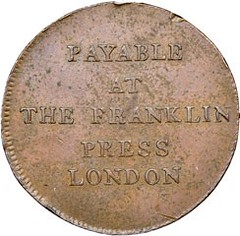 With a subject line putting coin "conservation" in quotes,
Martin Purdy of New Zealand writes:
With a subject line putting coin "conservation" in quotes,
Martin Purdy of New Zealand writes:
"I'm quite horrified by this. Is the fact these coins and tokens have been "restored" included on the certifier's label so buyers know their history? I thought the certification companies rejected cleaned coins outright - and even if it's done delicately and professionally, cleaning is still cleaning."
Conservation efforts are an important part of the history of a numismatic item, closely related to its provenance. Auction and dealer price listings should include these when known. If one is proud of one's work, one shouldn't be shy about it, and thanks to NCS for publishing these before-and-after images. Owners of the conserved pieces should reference this documentation when selling. While some buyers may be against cleaning or conservation on principal, others may prefer it. I know I'd be scared to death to try this on my own, but might wish for professional assistance in cases where it's warranted. -Editor
To read earlier E-Sylum articles, see:
ON NUMISMATIC DOCTORING AND CONSERVATION
(https://www.coinbooks.org/v22/esylum_v22n22a11.html)
MORE ON NUMISMATIC DOCTORING AND CONSERVATION
(https://www.coinbooks.org/v22/esylum_v22n23a14.html)
1794 FRANKLIN PRESS TOKEN CONSERVATION
(https://www.coinbooks.org/v23/esylum_v23n24a34.html)
Copper Coin Colors and the Golden Biscuit
Bill Eckberg writes:
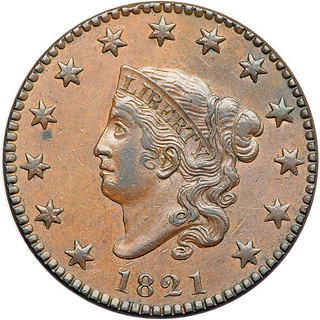 "Unfortunately, the coin illustrated in the E-Sylum articles about the Golden Biscuit would not qualify as such. If that was the coin, it has darkened a lot.
"Unfortunately, the coin illustrated in the E-Sylum articles about the Golden Biscuit would not qualify as such. If that was the coin, it has darkened a lot.
"This coin was illustrated in the Grading Guide For Early American Copper Coins as a Golden Biscuit. It was included in a two-page spread illustrating 34 coins (plus a large nugget of native copper) in various natural colors from Red to Ebony. Those who think copper coins come only in Red, Red-Brown and Brown are missing out on a lot of beauty, variety and interest."
It's a beauty! Thanks, -Editor
To read the earlier E-Sylum articles, see:
LOOSE CHANGE: JUNE 7, 2020 : The Golden Biscuit
(https://www.coinbooks.org/v23/esylum_v23n23a41.html)
NEWMAN PORTAL: MORE ON THE GOLDEN BISCUIT
(https://www.coinbooks.org/v23/esylum_v23n24a08.html)
Query: Chuck's Coin Corner
Kevin Day-Thorburn of
Saint John, NB Canada writes:
"I always enjoy your E-Sylum. I came across the attached holder recently and am wondering if any readers can identify the dealer, Chuck's Coin Corner. This sort of numismatic history, the people behind the hobby, I find interesting."
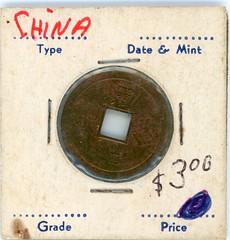
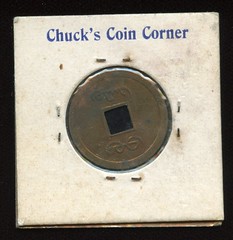
Can anyone help? I wouldn't be surprised if there were more than one "Chuck's Coin Corner" around. -Editor
More on C. E. Horn
Bill Groom writes:
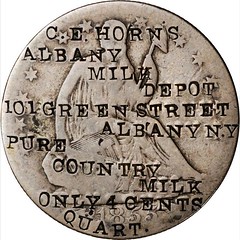 "The C.E. HORN counterstamp is an intriguing piece in that there's so much info conveyed. I suspect it's a one-of-a-kind item; this, given the individual letter punches used to create it. It was a labor of love, in effect, and perhaps Horn's personal pocket piece and calling card. Might the year of the coin have been Horn's birth year? Perhaps, the stamped coin was a jocular gift to him? Beyond speculation, I did manage to find a few facts.
"The C.E. HORN counterstamp is an intriguing piece in that there's so much info conveyed. I suspect it's a one-of-a-kind item; this, given the individual letter punches used to create it. It was a labor of love, in effect, and perhaps Horn's personal pocket piece and calling card. Might the year of the coin have been Horn's birth year? Perhaps, the stamped coin was a jocular gift to him? Beyond speculation, I did manage to find a few facts.
Clarence E. Horn appears in Polk's 1879 Albany City Directory as a grocer at 101 Green (per the below attachment). The grocery store was his "milk depot." He was absent from directories, dated 1875 and earlier.
"The house pictured didn't look to have been built in 1830. A Zillow listing reports it was built in 1930"
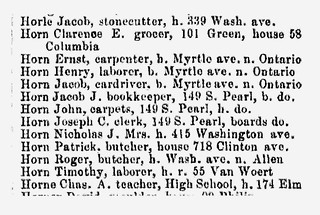
I'd have to agree on the house - the architecture does look more 20th century to me. -Editor
To read the earlier E-Sylum article, see:
MORE ON THE C. E. HORNS COUNTERSTAMP
(https://www.coinbooks.org/v23/esylum_v23n24a17.html)
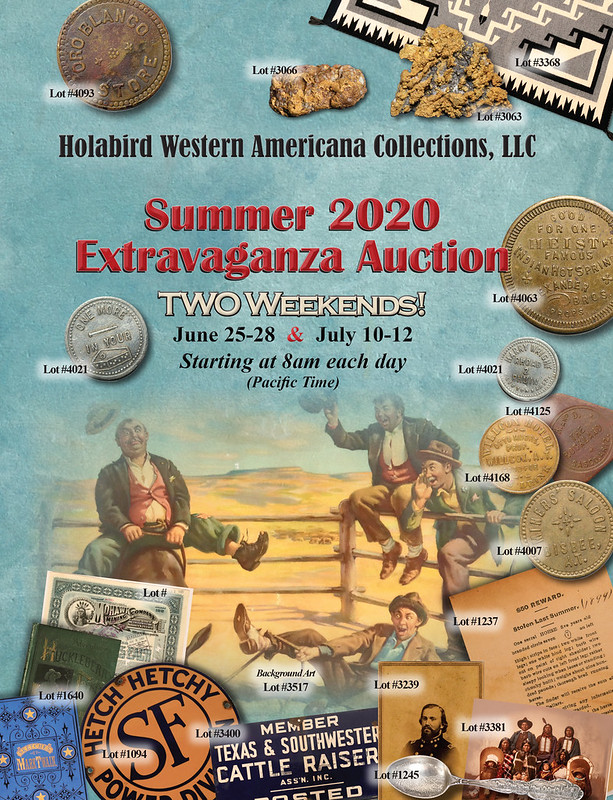
THE BANK RESTRICTION NOTE OF 1819
Gil Parsons submitted these thoughts on Cruikshank's Bank Restriction Note inspired by our earlier discussion on penalties for counterfeiting. Thank you! -Editor
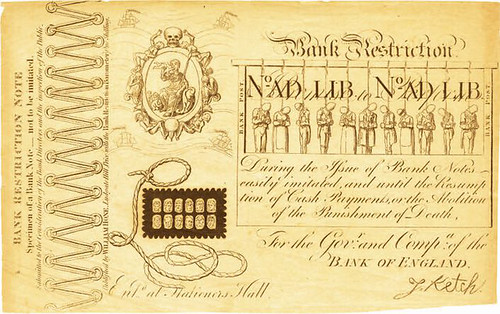
Cruikshank's Bank Restriction Note
The article and comment on "To Counterfeit tis Death" alludes to the unrealized proposal to illustrate actual hanging on banknotes. Actually, there exists precisely such a note, which deserves to be more widely known as it is one of the great works of graphic political satire. This piece, the "Bank Restriction Note" of 1819, was the work of George Cruikshank (1792-1878, artist, social agitator, illustrator of inter alia Dickens Sketches by Box and Oliver Twist) and William Hone (1780-1842. satirist and bookseller, known especially for his successful advancement of copyright law.)
The Bank Restriction Act of 1797 (37 Geo III.c.45) was an outgrowth of Pitt's overprinting of bank notes to cover the costs of the war with France: the Act withdrew large notes from circulation and divorced paper money from direct backing with gold. Vast numbers of one and two pound notes, often crudely made and easily forged, entered the money supply of England. Forgery was punishable by death, and continued to be so until 1832. Cruikshank claimed to have produced this note after seeing the gibbet at the Old Bailey upon which women had been hanged for passing counterfeit one pound notes.
The Bank Restriction Note is a close parody of an actual note of the time. M. Dorothy George (in Catalogue of Political and Personal Satires in the British Museum, ix, 1949) gives a concise description, which is reproduced thus:"Below the title, which is engraved along the left margin:'Specimen of a Bank Note--not to be imitated. Submitted to the consideration of the Bank Directors and the inspection of the Public'. Below this is a border of shackles at right angles to the heading of the note, 'Bank Restriction' in Gothic characters. Below is a long beam from which eleven bodies dangle, three being women; the two uprights of this gibbet are inscribed "Bank Post". Above the heads: 'I promise to perform", and over-printed: No Ad Lib to No Ad Lib The text:During the issue of Bank Notes/ easily imitated, and until the Resump/tion of Cash Payments, or the Abolition/ of the Punishment of Death,/ for the Govr and Compa of the/Bank of England. [signed] J. Ketch ["J. Ketch" was of course the slang term for the public hangman. It should be noted en passant that the original Jack Ketch had been an executioner of the seventeenth century, notorious for his decidedly bad aim]. On the left of the text, within an irregular oval, a woman seated like Britannia with a spear is devouring children. Outside the oval border are the figures of despairing women and agonized men, two with their heads in a noose. This is surmounted by a skull. As a background to this device wavy lines represent the sea; at each of the four corners is a ship with a pennant inscribed "Transport". Below this in place of the sum of money on the real note, is a large L made of rope, enclosing on a black ground twelve tiny heads, intended to represent heads between prison bars."
Cruikshank claimed that the publication of this Note stopped the production of one pound notes by the Bank of England and that it directly led to the end of hanging for forgery. This is not entirely true and George gives a good account of the legal and parliamentary wrangling. At any rate, Cruikshank regarded the Bank Restriction Note as one of his highest political and artistic achievements. Examples do come on the market from time to time.
One might note also that there is a good contextual account in William Graham. The One Pound Note in the Rise and Progress of Banking in Scotland. London, 1886
To read earlier E-Sylum articles, see:
GEORGE CRUIKSHANK'S NOTES
(https://www.coinbooks.org/esylum_v18n29a26.html)
COUNTERFEITS IN MILWAUKEE AND MINNEAPOLIS
(https://www.coinbooks.org/v23/esylum_v23n23a36.html)
TO COUNTERFEIT 'TIS DEATH
(https://www.coinbooks.org/v23/esylum_v23n24a14.html)
VOCABULARY TERM: MEDALLION
Dick Johnson submitted this entry from his Encyclopedia of Coin and Medal Terminology. Thanks - it's an excellent discussion of what a medallion is and isn't. -Editor
Medallion. A large medal, round or nearly so. In America a medallion is a medallic item larger than three and one-eighth inches, in Europe it is larger than eighty millimeters (80mm). The term is frequently misused in sales literature for a medal of any size and has even appeared on medals of less than 3-inch diameter. Generally medallions less than 5-inches can be struck and have two sides; less than 8-inch diameter can have two sides but only if cast. All those over that size are cast uniface. The upper size of a medallion is not defined.
A medallion is not a small medal enlarged, rather a work of art created – and intended -- to be larger than 80 millimeters. The increased size gives the medallic artist more canvas to prepare his creation; thus medallions often have more detail, design or devices to justify their larger size. The worst thinking in creating large medallic art is to make the subject, the award, or the theme appear more important by making it larger in size. This faulty premise has resulted in some bad medallic art.
Also, the pattern for a medal should not be called a “medallion.” It is not. Patterns are typically oversize (from two to ten times the intended size item), which are reduced on the die-engraving pantograph. The pattern for a struck medallion is also oversize, all others are modelled exact size.. When a relief item is, say, 12-inch (30.5 cm) diameter or more it is appropriately called a circular relief, always uniface, When a relief item is embedded in the floor of a building it is called a floor medallion; it can be any size and obviously uniface.
While a medallion in other art forms as part of some larger work a medallion is a large round design, often within a border containing a device or portrait (but usually without any lettering). Such medallion designs are found in painting , tapestry, fans, furniture, textiles, carpets. A similar large round design in sculpture or architecture is called a tondo, it usually stands alone,
Looking for the meaning of a numismatic word, or the description of a term? Try the Newman Numismatic Portal's Numismatic Dictionary at: https://nnp.wustl.edu/library/dictionary
Or if you would like a printed copy of the complete Encyclopedia, it is available. There are 1,854 terms, on 678 pages, in The Encyclopedia of Coin and Medal Technology. Even running two a week would require more than 19 years to publish them all. If you would like an advance draft of this vital reference work it may be obtained from the author for your check of $50 sent postpaid. Dick Johnson, 139 Thompson Drive, Torrington, CT 06790.
THE BOOK BAZARRE
DANIEL PARISH, JR. (1842-1914)
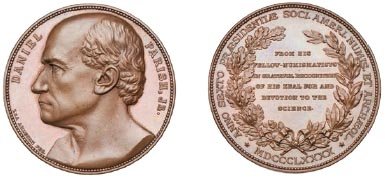
Daniel Parish, Jr. joined the ANS April 13, 1865, and assumed a leadership role almost immediately: that same year he was elected Corresponding Secretary. During the course of his association with the ANS over the next twenty-five years, Parish assumed numerous positions of increasing responsibility.
Initially, Parish served as Librarian from 1866-1870. By 1870, Parish had been elected First Vice-President. A donor, in 1878, to the ANS library. Parish would serve as either First or Second Vice-President for the next thirteen years. In 1883, he succeeded Charles Anthon as ANS President upon the latter's untimely death. In June of that year he donated $50 for the fund to collect $1,000 to buy a complete set of facsimile Greek and Roman coins for the ANS. The following year Parish would be elected President in his own right and remained as President until retiring in 1896. During Parish's tenure as president, the ANS substantially revised its Constitution in 1894 to incorporate the many revisions that had been made in a piecemeal fashion since 1884. Even after retiring from the presidency due to ill health, Parish continued to serve on numerous committees and served as First Vice-President once again from 1905-10. From 1910 until his death, Parish also served on the Board of Governors.
On December 6, 1894 read a paper, “Some New Light on the Washington Season Medal.”
He donated “The Capture of Louisburg” medal to the ANS in 1895.
Daniel Parish, Jr., was the very first to ever publish an extensive list of all known coin auction catalogues of auctions held in America. His three-part series that ran from August to October 1866 published in American Journal of Numismatics, Vol. 1, Nos. 4-6, August, September, October (1866) : 29-30, 35-36, and 43-44, served as the foundation for Emanuel Joseph Attinelli's, Numisgraphics, published a decade later. There is very strong evidence that suggests that Daniel Parish, Jr was assisting Attinelli in the production of his book, and that it is he whom Attinelli refers to in his Preface as the anonymous numismatist who owned the largest collection of coin auction catalogues in the country, which included the original broadside of the Watkins sale in June 1828. That broadside was sold to Richard Hoe Lawrence who donated it to the American Numismatic and Archaeological Society where it still remains.
You might say that Daniel Parish, Jr., is the ghost writer of Numisgraphics, but credit is due to Dr. Attinelli who records throughout Numisgraphics, of the various people to whom he wrote inquiring about auctions, and catalogs and personalities, and mentions those who loaned him copies and so forth of various material to complete his manuscript. This is also true regarding the other two parts of Numisgraphics, that the whole book serves as the very first American Numismatic Library Manual containing as complete a bibliography as possible of all known American coin auction catalogues, and other numismatic literature. Remember it was Daniel Parish, Jr., who was the Librarian of the American Numismatic and Archaeological Society and the whole of Numisgraphics, smacks of Parish's exhaustive work, augmented, supplemented and revised by Dr. Attinelli. Technically, Numisgraphics, is a co-authored book written by both Parish and Attinelli but due to the humility and modesty of Parish who wished to remain anonymous is known solely under the authorship of Dr. Attinelli. Daniel Parish, Jr., is our true and authentic unsung hero in American numismatic history!
To commemorate his many significant donations to the ANS, the Society commissioned a medal designed by Lea Ahlborn in 1890. In 1908, it elected Parish Honorary President for Life. Daniel Parish, Jr. died in December 1914. At the time of his death, Parish was also Chairman of the Executive Committee of the New-York Historical Society, an organization that he had been associated with for thirty-two years. Subscriber to Crosby's Early Coins of America.
To read the complete article, see:
PARISH, Jr., DANIEL
(https://sites.google.com/a/numismaticmall.com/www/numismaticmall-com/parish-jr-daniel)
HARVEY STACK'S NUMISMATIC FAMILY, PART 72
The latest article in Harvey Stack's blog series continues with auction sales of 1977. Thanks, Harvey. -Editor
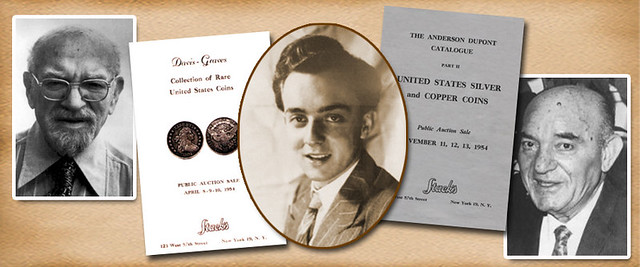
In 1976 Stack's had conducted very successful auctions, led by our ANA Convention sale, but also featuring other fine collections. Even with the number and size of the sales in 1976, Stack's was unable to schedule a number of smaller but still outstanding collections. This meant that 1977 would also be packed with public auctions, again seven different sales. In February we offered an extensive collection of U.S. coins formed by T. Henry Allen. The scope of the collection was large, and many attended the sale.
For our March sale, we were given a superb collection formed by Reed Hawn, whom we had worked with since the early 1950s when he and his father first visited Stack's. At first Reed Hawn dedicated himself to United States quarters, but his interests soon grew to other denominations. Stack's was fortunate to be able to serve such a dedicated collector for over 20 years.
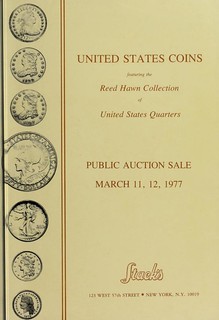 Our sale of The Reed Hawn Collection of Quarters 1796 to 1976 was a highlight of 1977. It was one of the finest collections of the series and relatively complete, with many of the highlights in Proof or Mint State condition. For early dates it featured 1796, 1804, 1815, 1819, 1823/2, 1827 Original and 1827 Restrike. There were Mint State examples dated 1831-1852, virtually all the Proofs from 1853 to 1891, and Mint State specimens of the mintmarked issues. The Barber and Standing Liberty quarter series were complete in Proof and Mint State. This sale would become an important pedigree in future collections of United States quarters. Reed Hawn would take the funds from this sale and go on to build collections in other series with the same enthusiasm with which he built this one. Stack's was privileged to offer other sales of the Reed Hawn Collection later in the century.
Our sale of The Reed Hawn Collection of Quarters 1796 to 1976 was a highlight of 1977. It was one of the finest collections of the series and relatively complete, with many of the highlights in Proof or Mint State condition. For early dates it featured 1796, 1804, 1815, 1819, 1823/2, 1827 Original and 1827 Restrike. There were Mint State examples dated 1831-1852, virtually all the Proofs from 1853 to 1891, and Mint State specimens of the mintmarked issues. The Barber and Standing Liberty quarter series were complete in Proof and Mint State. This sale would become an important pedigree in future collections of United States quarters. Reed Hawn would take the funds from this sale and go on to build collections in other series with the same enthusiasm with which he built this one. Stack's was privileged to offer other sales of the Reed Hawn Collection later in the century.
Our next sale presented more from the estate of T. Henry Allen, together with the collections of William A. Fenn and Harry Prock. These were complementary cabinets and offered general collectors choice and rare coins in various grades. Our June Public Auction featured colonial coins through $20 double eagles, as well as an interesting offering of world gold and silver.
In September, we featured the Donald J. Davenport Collection of U.S. Coins. Mr. Davenport had started collecting American coins but later focused on dollars of the world, a subject on which he wrote several reference books. His sale of the U.S. coins helped him to finance his new collection of world coins. Then in October, we offered a truly outstanding collection of Hungarian and Transylvania coins in silver and gold formed by Charles Z. Mihaili. It was known as one of the most complete cabinets of its type formed in the United States and the catalog is still used as a reference today.
We closed out the year with our December sale, for which we gathered together items from a series of small consignors to produce a sale that offered many collectors the chance to add high grade circulated condition or Mint State pieces to the collections they were building.
As was evident from Stack's public auction schedule for 1977, our firm served many different collectors with many different interests. We were able to appeal to those seeking high value coins as well as beginners and those on limited budgets. From the very earliest days we took pride in the fact that Stack's was never too large to serve the beginning collector and we were never too small to fulfill the most advanced collector's needs as well.
To read the complete article, see:
Harvey Stack Remembers: Growing up in a Numismatic Family, Part 72
(https://www.stacksbowers.com/News/Pages/Blogs.aspx?ArticleID=Harvey-Stack-Remembers-Part-72)
To read the complete article, see:
HARVEY STACK'S NUMISMATIC FAMILY, PART 71
(https://www.coinbooks.org/v23/esylum_v23n23a22.html)

TOWN URGED TO HONOR DR. BENJAMIN RUSH
United States Mint Treasurer was just one of the many roles Dr. Benjamin Rush filled. A columnist in the Greensburg Daily News of Rush County, Indiana has called for a monument in his honor. Here's an excerpt from his piece, published June 15, 2020. -Editor
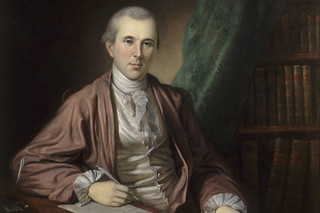 Most people know that Rush County and its county seat were named for Dr. Benjamin Rush by one of his students, Dr. William B. Laughlin. There's a large stone on the northeast side of the county courthouse that explains how Dr. Laughlin decided to name the county and its county seat for Dr. Rush. But beyond that, how much do people really know about Dr. Rush, and what, over the years, have we done to commemorate his life and achievements?
Most people know that Rush County and its county seat were named for Dr. Benjamin Rush by one of his students, Dr. William B. Laughlin. There's a large stone on the northeast side of the county courthouse that explains how Dr. Laughlin decided to name the county and its county seat for Dr. Rush. But beyond that, how much do people really know about Dr. Rush, and what, over the years, have we done to commemorate his life and achievements?
Dr. Rush was more than just a country doctor. Born Jan. 4, 1746, he was perhaps best known as a signer of the Declaration of Independence when he was only 30 years old. Dr. Rush was also a civic leader in Philadelphia. In addition, he was a politician, social reformer, humanitarian, educator and founder of Dickinson College. During the American Revolution, Rush served as Surgeon General of the Continental Army. He later became a professor of chemistry, medical theory, and clinical practice at the University of Pennsylvania.
In addition, Dr. Rush was a proponent of public health, advocated maintaining a clean environment, and stressed the importance of personal and military hygiene. Furthermore, his study of mental illness gave him the distinction of becoming one of the founders of American psychiatry. As recently as 1965, Dr. Rush was recognized by the American Psychiatric Association as the “father of American Psychiatry.” Not a bad list of achievements for one lifetime.
As a lifelong advocate of post-high school education, check out Dr. Rush's academic credentials. Wikipedia says, “Rush studied at what would become Princeton University, graduating with a Bachelor of Arts degree at the age of 14! From 1761 to 1766, Rush apprenticed under Dr. John Redman in Philadelphia. Redman encouraged him to further his studies at the University of Edinburgh in Scotland, where Rush studied from 1766 to 1768 and earned an M.D. Rush became fluent in French, Italian, and Spanish as a result of his studies and European tour.
In 1783, he was appointed to the staff of Pennsylvania Hospital, and he remained a member until his death. He was elected to the Pennsylvania convention which adopted the Federal constitution and was appointed treasurer of the United States Mint, serving from 1797–1813 He was [also] elected a Fellow of the American Academy of Arts and Sciences in 1788.
Finally, during his remarkable career, he educated over 3,000 medical students, and several of them established Rush Medical College in Chicago in his honor after his death. It exists today and is known as Rush University Medical Center. Dr. Rush died at the early age of 68 of typhus. It is almost impossible to imagine accomplishing as much as he did in such a relatively short lifetime.
Now, what have we, as a community, done to honor the memory of the man for whom our county and county seat are named? Precious little, I'm afraid. It's high time that we, at least, erect a monument to Dr. Rush on the courthouse lawn or front the lawn of the high school with a statue of Rush himself on top – not unlike the Civil War monument in East Hill Cemetery, although perhaps not quite that large.
So, my suggestion is that the city and county appointment a select committee charged with the responsibility of coming up with a design for a monument to Dr. Rush to be placed on the southeast quadrant of the courthouse lawn or in front of the high school. In addition, the committee chosen should also be charged with finding a sculptor capable of doing the job and coming up with a plan to raise the funds for the project (thank heaven we have a Community Foundation that may be able to assist).
Given Dr. Rush's life of accomplishments, it's high time that we recognized his legacy and honored his memory in a tangible way.
To read the complete article, see:
Time to honor Dr. Benjamin Rush
(https://www.greensburgdailynews.com/opinion/columns/time-to-honor-dr-benjamin-rush/article_14313284-af22-11ea-984b-a35f7969e28c.html)
To read an earlier E-Sylum article, see:
NEW BOOKS: MINT TREASURER BENJAMIN RUSH
(https://www.coinbooks.org/v21/esylum_v21n38a07.html)
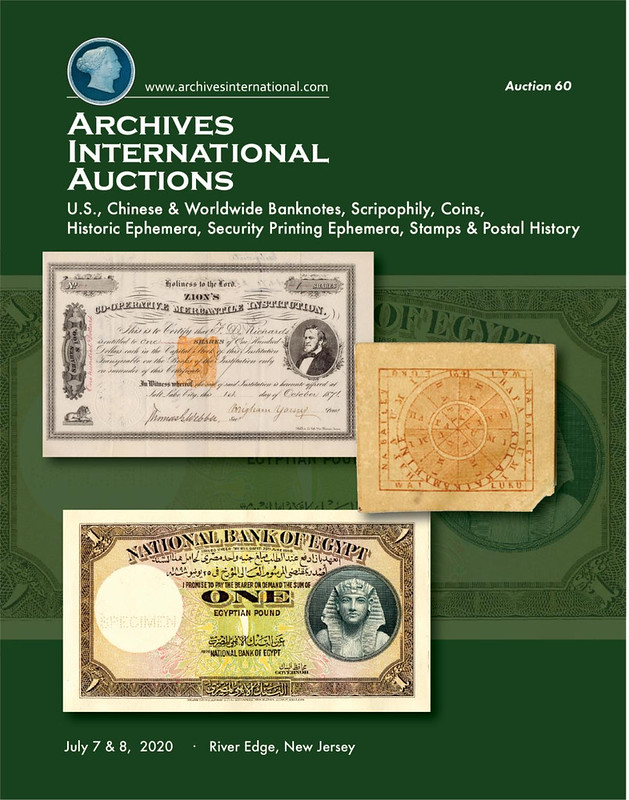
MORE ON THE HOLABIRD SUMMER 2020 SALES
Here's some more information from Holabird Americana on their upcoming Summer 2020 auction sales. -Editor
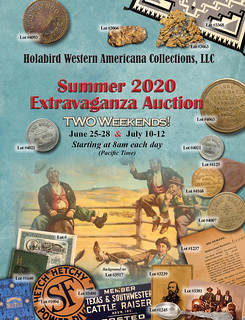 Here we are in June already with our third massive sale of the year, and largest yet, with more
than 4500 lots. In order to facilitate this sale, we needed to go to seven days - and to do that, had to
spread the sale over two separate weekends, two weeks apart.
Here we are in June already with our third massive sale of the year, and largest yet, with more
than 4500 lots. In order to facilitate this sale, we needed to go to seven days - and to do that, had to
spread the sale over two separate weekends, two weeks apart.
This sale features a number of new and important collections of a wide variety of Americana. Our August sale will also feature some “hum-dingers” of collections that we are logging in now.
Discussion of a Few of the Collections
This sale has a number of important collections, offered in part now and in upcoming sales. In the last two sales we featured the John Reynolds Collection, and offer more here. Reynolds was an inveterate collector of Californiana for more than 50 years. Of particular importance here are a variety of vintage historical baseball and boxing cards (c1920-50) and historical material that we sent to an authentication service for grading. Their comment to us was that this is the finest collection ever seen. It should be noted the cards grades were “downgraded' because Reynolds placed his price code in light pencil on the back of each card, easily removable.
Bart Landinger loved collecting Arizona material, mostly trade tokens. He garnered many great rarities while on the roads looking at collections over the years, and was a friendly face at Western token shows. He tragically lost his life recently, and this collection is a Celebration of Life for him.
Benjamin Fauver authored many books on tokens, and particularly loved gaming counters. He wrote at least seven books on American counters, those striking tokens made to resemble American gold coins. He also collected foreign counters (Jetons and the like), made for hundreds of years, particularly in western Europe. The Fauver American Counter collection is massive, and we have gone through it painstakingly to garner all of the varieties he located and collected. It will be offered over several sales. Fauver also collected pinback buttons of all sorts, with perhaps more than 10,000 offered here alone.
In the last sale we started selling a massive Western Map collection, which will continue for several sales. The collection has unusual maps generally not commonly seen.
Gold and minerals continue to be hot, and we have more gold specimens from two western collections.
Part of a Sam Clemens (Mark Twain) library highlights a massive Western history library spread throughout the sale.
Idaho collectors will love the huge Idaho real photo postcard collection spread throughout the sale.
The Art section is once again fantastic, highlighted by a group of early signed Norman Rockwell prints.
Searching for Your Favorite Items
Searching for items is really easy. We installed a search program in the “Virtual Catalog” found
on our front web page at holabirdamericana.com. Simply click on the catalog cover for this sale, and a
search box will come up in the upper right corner of your screen above the catalog cover. Fill in your
search words, and the search monkey will find everything with that name, locate it, and place markers
at the left. Click on any of these markers and it takes you to highlighted text containing your search
word (s).
I will be writing a newsletter regarding the contents of each day's sale in advance of the sale.
Day 1 (1000 series) June 25, 2020
- California Ephemera (more Reynolds Collection)
- Idaho real photo post card collection (also found in other places in the catalog)
- Western map collection (also found in other places in catalog)
- Historical and vintage pinback collection
- Vintage doll collection
- American Directory Collection
- Sam Clemens (Mark Twain) Collection
Day 2 (2000 series) June 26, 2020
- Railroad badges and pass collection
- Prag Railroad stock collection
- Stage passes (Includes Sonora to Bodie)
- Mining stocks from various collections
Day 3 (3000 series) June 27, 2020
- Minerals and native gold nuggets and rarities
- Mining artifacts from an old collection
- Mine maps
- Native American: Art, Rugs, Jewelry, References (Chinook Dictionary, etc) Cowboy
- Art (Norman Rockwell early signed prints)
- Bottles and saloon collectibles from various Western collections
Day 4 (4000 series) June 28, 2020
- Tokens- Bart Landinger Arizona Collection; California and western token and scrip collection;
- Coins: Coin hoards (Indian Trading Post in Russellville, Ark.) cents to nickels with rare dates
- Medals: Foreign and American medals from several Western Collections
- Gaming Counters: a start of the massive Benjamin Fauver Collection
- Exposition collectibles
- Sports- Large baseball and boxing collection of John Reynolds
Day 5 (5000 series) July 10, 2020
- General Americana collectibles of all sorts
- Post card collection, California and the West
Day 6 (6000 series) July 11, 2020
- Mining stocks. Wide variety from a number of collections
Day 7 (7000 series) July 12, 2020
- Political Button Collection (Fauver)
- Sports: Baseball, boxing, Olympics
- Firearms collectibles (no guns)
- Art- all categories here
- Historical Maps
- Historical reference library
To read the earlier E-Sylum article, see:
HOLABIRD SUMMER 2020 SALES
(https://www.coinbooks.org/v23/esylum_v23n24a24.html)

SELECTIONS FROM HOLABIRD SUMMER 2020 SALES
Here's a selection of items that caught my eye in the upcoming June 2020 Holabird Summer Extravaganza Auction. -Editor
Lot 2365: 1863 Confederate $500 Bond
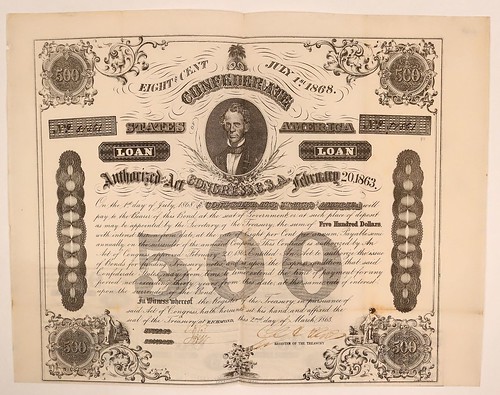
Very nice confederate bond issued at Richmond, Virginia in 1863 for $500. In very fine condition. Seven coupons below. CR 124.
To read the complete lot description, see:
Confederate Bond, 1863, $500 from Richmond, Virginia (111932)
(https://holabirdamericana.liveauctiongroup.com/Confederate-Bond-1863-500-from-Richmond-Virginia-111932_i37406656)
Lot 2369: 1917 $50 Liberty Loan Bond

$50 Liberty Loan Bond of 1917 in very fine condition. The United States of America, for Value Received Promises to Pay To The Bearer The Sum of Fifty Dollars. Lady Liberty at the right and Thomas Jefferson to the left. 53 coupons attached.
Great WWI financial instrument. -Editor
To read the complete lot description, see:
Liberty Loan Bond of 1917, $50 Denomination (111826)
(https://holabirdamericana.liveauctiongroup.com/Liberty-Loan-Bond-of-1917-50-Denomination-111826_i37406660)
Lot 2391: Orion Silver Mining Company Stock Certificate
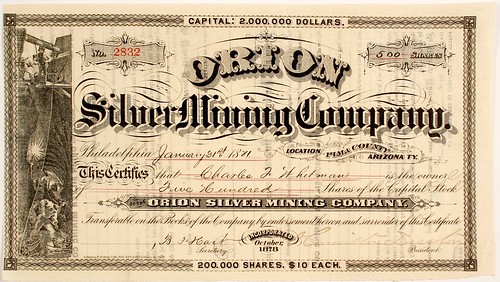
Number 2832 for 500 shares to Charles Whitman in 1881. Signed by BF Hart and Hamilton Distton. Cut unevenly, but no edge, corner, color or pinhole issues. The company had decent ores and built a mill which ran intermittently for lack of water. Disston was the son of a millionaire saw manufacturer in Philadelphia. He would make a dramatic purchase of 4,000,000 acres of Florida swampland for 25c an acre. He would turn this into buildable land. [Grabani]
To read the complete lot description, see:
Orion Silver Mining Company Stock Certificate (63000)
(https://holabirdamericana.liveauctiongroup.com/Orion-Silver-Mining-Company-Stock-Certificate-63000_i37406682)
Lot 4017: Cedar Springs Arizona Indian Trader Token
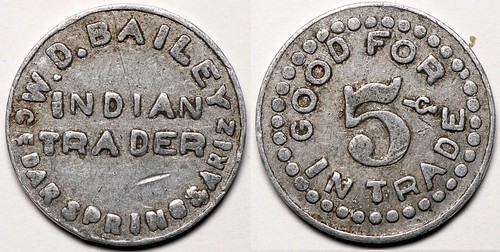
W.D. Bailey / Indian / Trader / Cedar Springs, Ariz.// Good for / 5c / in trade. AL, 20mm, R9.
Cedar Springs became a ghost town during the 1920's.
Provenance: Bart Landinger Arizona Token Collection
Great Indian trader token. -Editor
To read the complete lot description, see:
Cedar Springs, AZ Token: W.D. Bailey Indian Trader (119274)
(https://holabirdamericana.liveauctiongroup.com/Cedar-Springs-AZ-Token-W-D-Bailey-Indian-Trader-119274_i37407555)
Lot 4039: Fort Grant Arizona Exchange Tokens
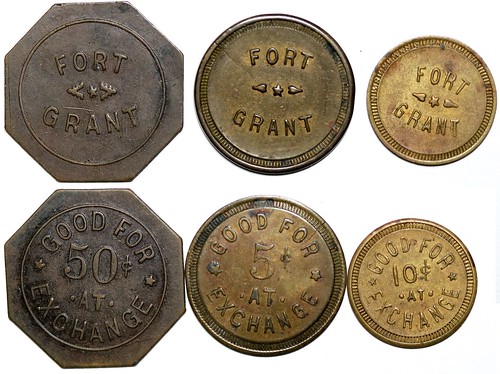
Lot of 3. 1. Fort/-/Grant//G.F./10¢/•AT•/Exchange. Rd., Br., 20mm. 2. Fort/-/Grant//G.F./5¢/•AT•/Exchange. Rd., Br., 23mm. 3. Fort//Grant. Oct., Br., 27mm.
Provenance: Bart Landinger Arizona Token Collection
A plain but interesting group. -Editor
To read the complete lot description, see:
Fort Grant, AZ Tokens (117596)
(https://holabirdamericana.liveauctiongroup.com/Fort-Grant-AZ-Tokens-117596_i37407577)
Lot 4110: Kelly & Stephens Arizona Territory Token
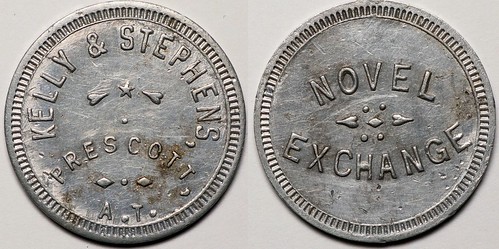
Kelly & Stephens, / Prescott / A.T. // Novel / Exchange. AL, 23mm, R9.
Provenance: Bart Landinger Arizona Token Collection
Rare Arizona territory token. -Editor
To read the complete lot description, see:
Prescott A.T.: Kelly & Stephens Token (119295)
(https://holabirdamericana.liveauctiongroup.com/Prescott-A-T-Kelly-Stephens-Token-119295_i37407648)
Lot 4268: Virginia City Merchant Tokens
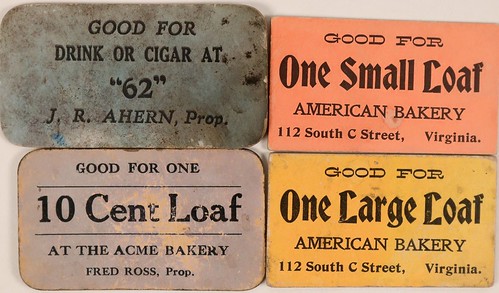
Lot of four cardboard tokens: Good For / Drink or Cigar at / "62" / J. R. Ahern, Prop. Three "good for a loaf" tickets at American Bakery, 112 South C Street, and Acme Bakery, Fred Ross, Prop. Ex: Ron Lerch Collection.
Colorful group. Cardboard scrip if ephemeral and generally very rare. -Editor
Lot 4368: 1910 San Francisco Admission Day Festival Medal
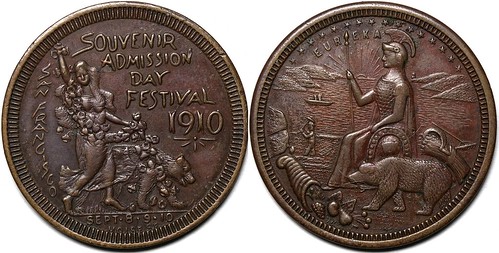
Souvenir Admission Day Festival 1910, Sept. 8, 9, 10// Eureka Reverse with golden bear at bottom right. Moise, SF. Brass, 1 3/8" diameter. AU, toned RB.
Provenance: John Reynolds Collection
See the earlier E-Sylum article (linked below) for more information. -Editor
To read the complete lot description, see:
Unlisted So-Called Dollar: SF Admission Day Festival, 1910 (108803)
(https://holabirdamericana.liveauctiongroup.com/Unlisted-So-Called-Dollar-SF-Admission-Day-Festival-1910-108803_i37407906)
To read the earlier E-Sylum article, see:
NOTES FROM E-SYLUM READERS: APRIL 12, 2020 : Researching the Acme Beer Token
(https://www.coinbooks.org/v23/esylum_v23n15a19.html)
To read the complete lot description, see:
Virginia City Merchant Tokens (119721)
(https://holabirdamericana.liveauctiongroup.com/Virginia-City-Merchant-Tokens-119721_i37407806)
THE BOOK BAZARRE
FEISEL MAY 2020 TOKEN SALE REMINDER
There are more great tokens in Duane Feisel's annual sale, which was postponed to this month. Here's Duane's reminder note with a few selected lots. -Editor
As you are probably aware, the USPS was three weeks late in delivering the May issue of “Talkin' Tokens” which forced rescheduling the closing dates for my current auction to June 27 (advance bid closing) and June 28 (bid bumping). The listing also appeared in the June issue which was delivered on time. Thanks to you who have already submitted bids!
Many of you have already visited my photo hosting site to view high quality images of many of the lots being offered. This site can be readily accessed at: https://tinyurl.com/vv5mzmt Please take notice that bids are required by lot number, and not the image number on this site. By the way, I will add additional images upon request.
This is one of my best auctions so far (after 26 years!) considering the variety, value, and rarity of what is being offered in so many different categories. One such category is saloon tokens that includes a number of listings for California as well as many other states. A piece I find quite attractive is:
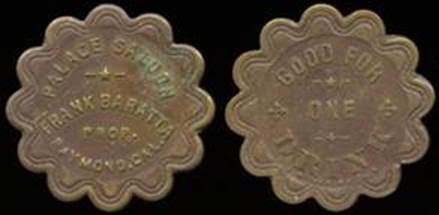
40 PALACE SALOON / FRANK BARATTA / PROP. / RAYMOND, CAL. //
Good For / One / Drink / (sm: C.A. Klinkner & Co. S.F.),
br sc-12 26mm. Listed 2F-1 $250/500. ... G3-MB$250
In military tokens a nice selection is up for bidding including a number of pieces from Wyoming/Wyoming Territory.
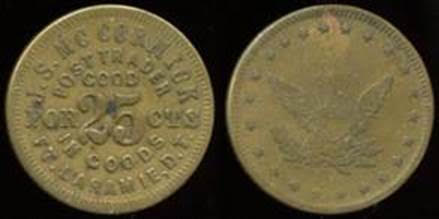
123 J.S. McCORMICK / POST TRADER / GOOD / FOR 25 CTS /
IN GOODS / FT. LARAMIE, D.T. // (spread eagle in circle of stars) /
(sm: Childs Inc.), br rd 26mm. Listed DT50 $750. ……………………… G3-MB$500
There are many different Masonic Chapter Pennies up for bidding.
A wide selection of Arizona tokens is listing, including my favorite piece from the entire auction:
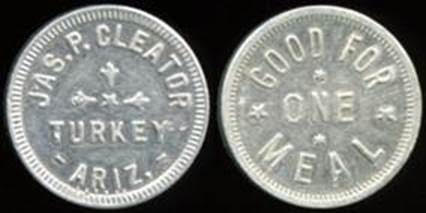
263 JAS. P. CLEATOR / TURKEY ARIZ. / (sm: LARS CO) //
Good For / One / Meal, al rd 24mm. Listed TUR-130 R8 $300. G5-MB$200
And so much more! Please take a look at the listing for lots that may be of interest to you. If you would like to have a copy of the auction with color token images, please let me know.
Looking forward to receiving your bids!
To read the earlier E-Sylum article, see:
FEISEL MAY 2020 TOKEN SALE SELECTIONS
(https://www.coinbooks.org/v23/esylum_v23n17a20.html)
For the complete auction sale, see:
2020 - JUNE MAIL BID SALE
(https://collector-ca.smugmug.com/Tokens-Exonumia/2020-MAY-MAIL-BID-SALE/)

ARCHIVES INTERNATIONAL AUCTION 60 SELECTIONS
Here's a selection of items that caught my eye in the July 2020 Archives International Auction 60. -Editor
Lot 29: 1871 Barbados Colonial Bank Note
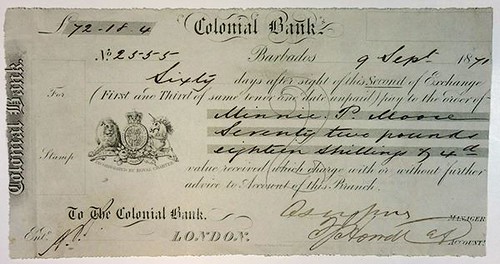
Barbados, 1871 Colonial Bank, 2nd of Exchange, I/U, 72 Pounds, Arms Left, VF condition. PB Printer.
To read the complete lot description, see:
Colonial Bank, 1871, 2nd of Exchange I/U Bill of Exchange.
(https://auction.archivesinternational.com/Colonial-Bank-1871-2nd-of-Exchange-I-U-Bill-of-Exchange_i37583456)
Lot 61: 1917 Canadian Bank of Commerce Proof
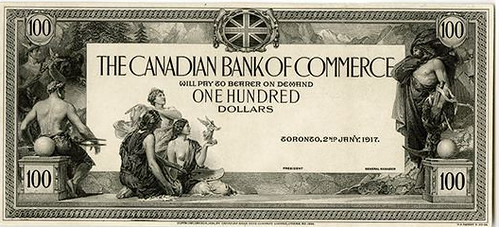
Toronto, Ontario, Canada, 2nd January, 1917, $100, 75160212P1, Proof face printed on india on cut down thin card banknote, Black with no seal or undertint, Foringer design with nude men and women and allegorical figures, No back. PMG graded Choice Uncirculated 63, very attractive high denomination note with popular Foringer design. Canadian BNC, Ltd, Ottawa, 1924.
Nice artwork. -Editor
To read the complete lot description, see:
Canadian Bank of Commerce, 1917 (1924 imprint on bottom), Proof Obverse Banknote.
(https://auction.archivesinternational.com/Canadian-Bank-of-Commerce-1917-1924-imprint-on-bottom-Proof-Obverse-Banknote_i37583488)
Lot 248: 1803 Copenhagen Exchange & Mortgage Bank Note
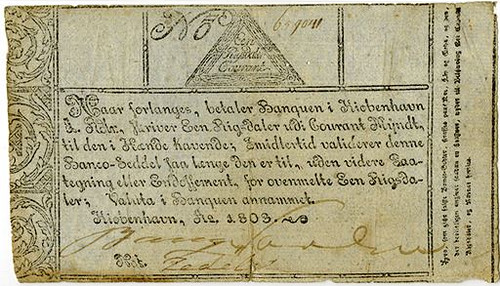
Copenhagen, Denmark. Issued 1 Rigsdaler Courant, 1803, P-A28. S/N 659041, PMG graded Very Fine 20 with comment "Split" (Cert # 8072412-051).
Interesting plain early banknote. -Editor
To read the complete lot description, see:
Exchange & Mortgage Bank (Copenhagen). 1803. Issued Banknote.
(https://auction.archivesinternational.com/Exchange-Mortgage-Bank-Copenhagen-1803-Issued-Banknote_i37583675)
Lot 257: 1930 Bank of Egypt Color Trial
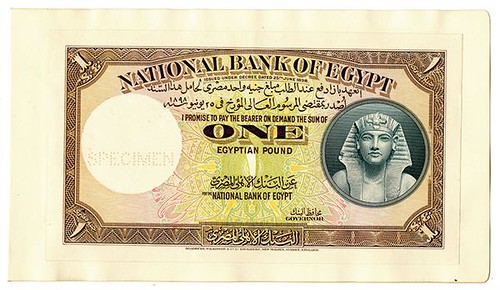
Egypt, ND (ca.1930), Uniface Front and Back Color Trial Proof Pair, 1 Egyptian Pound, P-22ct Unlisted color trial proofs, portrait of Tutankhamen at right in blue instead of issued brown, brown border with light green and peach underprint, back brown instead of issued green, Both are attached back to back on the same thin card. Extremely rare as a trial color. Both would grade choice to Gem Uncirculated or better if removed. BWC.
Colorful note. -Editor
To read the complete lot description, see:
National Bank of Egypt, ND (ca.1930) Color Trial Uniface Front & Back Proofs.
(https://auction.archivesinternational.com/National-Bank-of-Egypt-ND-ca-1930-Color-Trial-Uniface-Front-Back-Proofs_i37583684)
Lot 502: 1930 Hongkong & Shanghai Banking Corporation Note
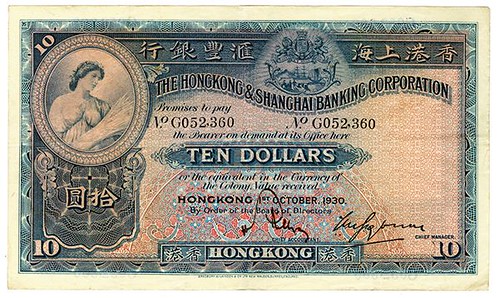
Hongkong. 1st October, 1930. $10, P-178a., Issued banknote. Green on m/c with allegorical woman on upper left, back green and m/c with 4 serial numbers on top and bottom margins. 1 Printed signature and 1 handwritten signature, Note appears VF with great colors and sharp corners that on first appearance gives the impression of XF condition. BWC.
Beautiful colors. Nice note. -Editor
To read the complete lot description, see:
Hongkong & Shanghai Banking Corporation, 1930 Issue Banknote.
(https://auction.archivesinternational.com/Hongkong-Shanghai-Banking-Corporation-1930-Issue-Banknote_i37583929)
Lot 551: Hawaii Wailuku Female Seminary Note
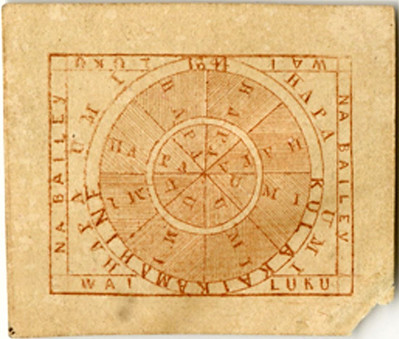
Kingdom of Hawaii. Hapaumi (1/10), P-Unlisted, 2PE-5, issued scrip note-banknote. 1.75 c 2.5 inches, This piece of scrip is printed in vermilion ink on thin cardboard. PMG graded Choice About Uncirculated 58. Only seven of these were reportedly given to the Hawaii State Archives. An extremely rare and desirable piece of Hawaiian numismatic history. We could only find a record of it last being offered in 2009.
Fantastic note, rarely offered. -Editor
To read the complete lot description, see:
Wailuku Female Seminary, (ND (1844) Hapaumi (1/10) Issued Scrip-Banknote.
(https://auction.archivesinternational.com/Wailuku-Female-Seminary-ND-1844-Hapaumi-1-10-Issued-Scrip-Banknote_i37583978)
Lot 645: Transcaucasian Railroad Tokens
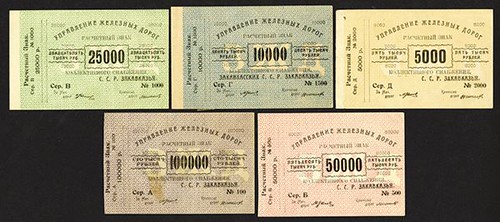
Russia, Lot of 5 notes, Includes 5000; 10,000; 25,000; 50,000 and 100,000 Rubles, P-S641 to P-S645, All IN Choice XF to Unc., Printed in various colors, the 100,000 Rubles as 2 stamp hinges on the back that can be removed. Scarce set and rarely seen in high grade. (5)
Colorful set. I'd never seen these before. -Editor
To read the complete lot description, see:
Transcaucasian S.S.R.R. Railroad, 1920 ND Exchange Tokens Issue Group.
(https://auction.archivesinternational.com/Transcaucasian-S-S-R-R-Railroad-1920-ND-Exchange-Tokens-Issue-Group_i37584072)
Lot 1369: 1882 Gold Certificate
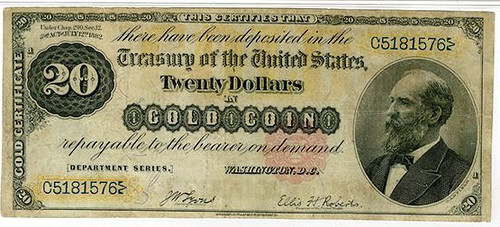
Washington, D.C., $20, 1882 Gold Certificate, Fr#1178, S/N C5181576, pp D, PMG graded Very Fine 20.
To read the complete lot description, see:
U.S. Gold Certificate, $20, 1882, Fr#1178, Lyons | Roberts Sigs.
(https://auction.archivesinternational.com/U-S-Gold-Certificate-20-1882-Fr-1178-Lyons-Roberts-Sigs_i37583273)
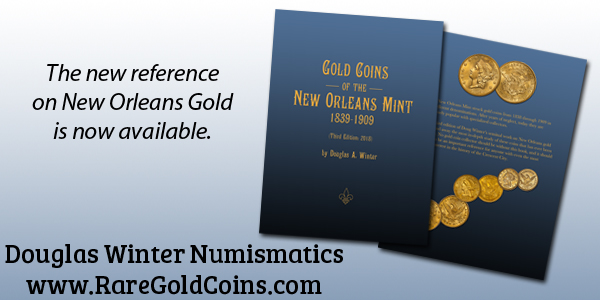
LYN KNIGHT CURRENCY AUCTIONS UPDATE
Joel Shafer of Lyn Knight Currency Auctions passed along this update on recent and future sales. Thanks. -Editor
Lyn Knight Currency Auctions (LKCA) just finished a successful virtual International Paper Money Show (IPMS, often called "Memphis") event. A future E-Sylum article will provide information about the wonderful IPMS presentations and strong viewing audience.
Our auctions produced some exceptional prices, including records; here are just a few results:
- Bahamas LOT 72954: realized 34,800
- Canada LOT 73070 block serial numbers Queen Elizabeth II modified portrait: realized 13,200
- Canada LOT 73071 low serial numbers Queen Elizabeth II modified portrait: realized 12,600
- Colombia LOT 73100: realized 2,400
- East Africa LOT 73122: realized 1920
- Greece LOT 73171: realized 10,200
- Greece LOT 73172: realized 9,000
- Guatemala LOT 73181: realized 9,000
- Iraq LOT 73311: realized 9,600
LKCA June Knight Live features several specialized sessions. Lots can be viewed and bids made at www.lynknight.com.
Here is the schedule:
- Military Items Tuesday, June 23, beginning at 10AM (CT)
- World Paper Money Tuesday, June 23, beginning at 5PM (CT)
- World Paper Money > Ireland, etc. Wednesday, June 24, beginning at 10AM (CT)
- Session 1 - US Currency Thursday, June 25, beginning at 10AM (CT)
- Session 2 - US Currency Thursday, June 25, beginning at 6:30PM (CT)
And here is information about the two specialized world sessions, Military Items and Ireland, et al.
The military items sale includes what I believe to be an UNPRECEDENTED offering: six Allied Military Currency booklets in the same auction!! Finding one booklet among Austria, France, Germany, and Italy is a significant accomplishment; to have all four at once may never happen again in any public venue. Japanese booklets are somewhat more available but still command competitive bidding. The quintessential source World War II Remembered contains a paucity of information on these booklets.
- LOT 74242: Austria: does not include 25 Schilling because made in the US
- LOT 74292: France: includes the rare 5000 Francs
- LOT 74305: Germany: includes the rare 1000 Mark eight digit serial with F
- LOT 74418: Italy: mix of 1943 and 1943A notes
- LOT 74424: Japan "A" Yen
- LOT 74427: Japan "B" Yen
The Irish session (which also includes Great Britain, Guernsey, Jersey, Northern Ireland, and Scotland) features many notes that portray Lady Lavery. So who was Lady Lavery? In 1918, Irish artist John Lavery became knighted and his wife Hazel Lavery (the former Hazel Martyn from Chicago) became Lady Lavery. Back in Chicago, Hazel Lavery was known by some as "the most beautiful girl in the Midwest". Lavery had painted Hazel in 1922; subsequently, the Irish government selected Lavery's work as an "emblematic female figure" for its new series of notes and the rest is history. Each river mask, found on the back of the notes, is part of the Dublin Custom House (there are actually 14 different masks but only half are utilized on bank notes).
Finding a collection of this scope in appealing condition is very difficult. Be sure to check out descriptions which relate surprisingly limited amounts made for some types/varieties. Many thanks to the phenomenal Paper Money of Ireland catalog for this information.
Here are a few highlights from this Irish session:
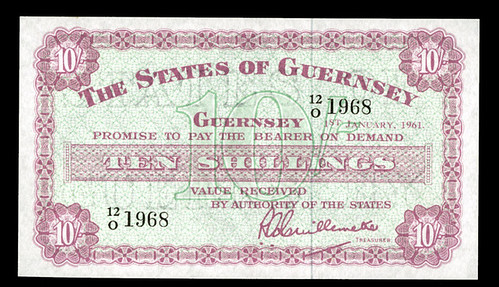
- LOT 74600 Great Britain: tough early British type in high grade
- LOT 74620 Guernsey: scarcer date for type
- LOT 74671, LOT 74802, and terrific specimen LOT 74803: Ireland: early dates of the highest denomination 100 Pounds; 100 Pounds was a fortune in those days!! Very few made
- LOT 74799, LOT 74800, and LOT 74801: Ireland: early 50 Pounds are seldom seen
- LOT 74870 N. Ireland; somewhat earlier type of this high denomination
- LOT 74949 Scotland: low serial number and high grade is good combination
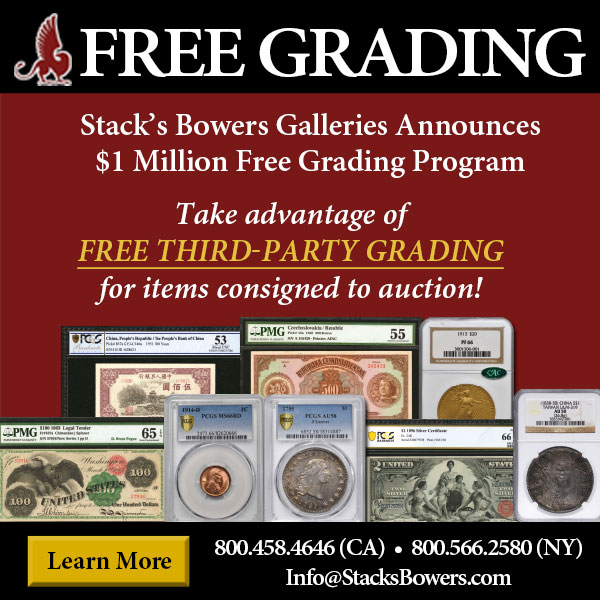
THE PAVILLION DOLLAR
A June 19, 2020 blog article by Stack's Bowers Senior Numismatist and Cataloger discusses China's Pavillion Dollar. -Editor
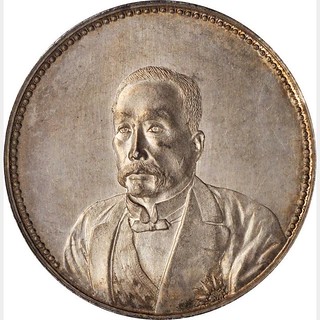
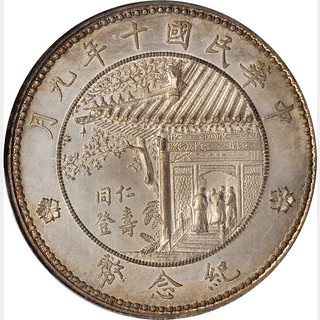
Having a lengthy history of public service in the late stages of the Qing dynasty and the beginning of the Republic, Hsu Shih-chang (Xú Shìchang) was an important figure during the first quarter of the 20th century. From 1907-1909, he served as Viceroy of the Three Northeast Provinces, and later acted as a tutor to the very young "Puyi," the Xuantong Emperor. Even after the downfall of the Qing dynasty and the early years of the Republic, he believed that the imperial family would be restored and sought to have Puyi provided with a broad education. In addition to these close imperial ties, he was the closest friend of Yuan Shih-kai's (Yuán Shìkai), an important figure in his own right who would serve as the first president of the newly established Republic in 1916. Owing to his civilian status, Hsu was highly regarded as a successor to the presidency, as the Republic had quickly become dominated by various warlords and forceful factions. On October 10, 1918, Hsu succeeded to the presidency, a role that he would hold for nearly four years.
During this term in office, a silver coin was minted at Tientsin lacking a denomination. As such, Kann refers to it as a commemorative medallion, though its size would indicate it was intended as a dollar. The obverse features a bust of the president facing slightly left with no legend, while the reverse depicts an elaborate pavilion with figures ascending its steps. To the inner left are four characters translating to "benevolent birthdays always continue," while the border contains a legend identifying the Republic and the date, and three characters meaning "commemorative coin." These issues are always popular, especially in high grade, problem free states of preservation. One such example—a PCGS MS-62—is offered in our June Collectors Choice Online (CCO) auction, and features great luster and light-to-medium gray toning. Though Hsu would eventually fall out of favor in the final year of his presidency, the reverse of this type presents a glimpse at the brief, serene nature of his term in office.
To read the complete article, see:
Hsu Shih-chang and the Pavilion "Dollar"
(https://www.stacksbowers.com/News/Pages/Blogs.aspx?ArticleID=hsu-shih-chang-pavillion-dollar)
ON THE TRAIL OF A BUFFALO NICKEL TYPE COIN
Jeff Burke submitted these notes on his acquisition of a 1913 Type I Buffalo nickel. Thanks! -Editor
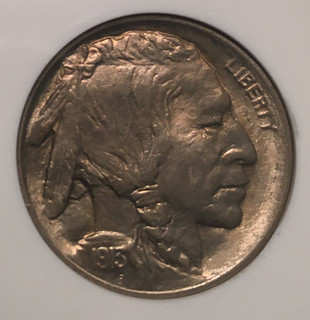
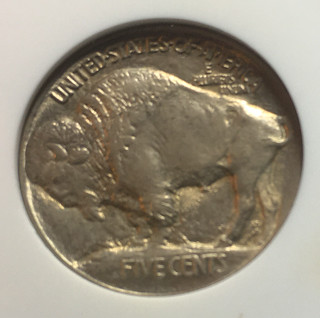
Introduction
I have always loved Buffalo nickels! I remember my exhilaration after purchasing a treasured
Buffalo nickel in the early 1970s. It was a 1937-D three-legged variety in EF. Mentoring from
older numismatists helped me make a wise selection. As a high school student, I was the second
youngest member of the South Central Nebraska Coin Club in Hastings, Nebraska, in the mid-1970s.
Fast forward to many years later. I purchased a beautiful light gold-toned 1913-S Type II PCGS OGH MS 63 from Park Avenue Numismatics of Miami, FL, in 2006. I also picked up a wonderful 1926-S PCGS OGH VF 35 from Terry Lenz of Key Date Coins at the Colorado Springs Coin Show in 2010. I ended up trading these coins for several high-grade Draped Bust half cents in 2015 and 2016.
To prepare for my new Buffalo nickel acquisition, I reread parts of The Complete Guide to Buffalo Nickels, David Lange, 2006; Renaissance of American Coinage: 1909-1915, Roger Burdette, 2007; A Guidebook of Buffalo and Jefferson Nickels, David Bowers, 2007; and The Expert's Guide to Collecting & Investing in Rare Coins, also by Bowers, 2005. Perusing these books reminded me that the National Cowboy Hall of Fame and Western Heritage Center in Oklahoma City is the repository of artworks by James Earle Fraser and Laura Gardin Fraser. I have long admired Laura's new quarter design with an obverse depiction of George Washington. Her winning design in 1931 should have been on our nation's quarters in 1932! Syracuse University retains the Frasers' personal papers. After retirement, I would be interested in doing archival research on the Frasers and their coin and medal designs at these locations.
Conducting Research
After contemplating the 1913-Type I, the 1915-P, and the 1938-D as some of the most well-struck American Bison nickels, I opted to focus on the singular year 1913-Type I which can be
purchased for a reasonable price in MS 64 or MS 65. I like the raised ground look on the
1913-Type I and the fact that this was the first date minted in a new series.
Making the Purchase
I prefer Buffalo nickels with toning to avoid dipped coins. I studied dozens of specimens on the
Certified Coin Exchange and many other dealer sites. After an extensive search, I finally settled
on a 1913-Type I NGC MS 65 that I found on eBay.
This wonderful coin arrived in the mail today (6/13/20). It looks even better in person than it did in the eBay images! My wife Beth bought this coin for me as a Father's Day gift. I am very pleased with it!
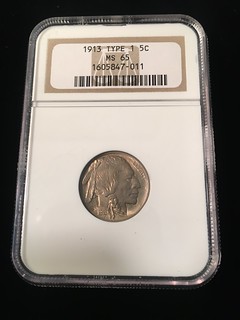
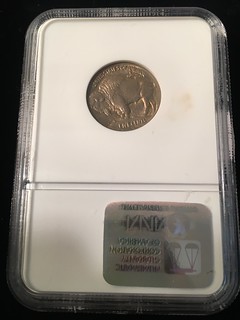
To read Jeff's earlier article, see:
JEFF BURKE'S SAINT-GAUDENS DOUBLE EAGLE QUEST
(https://www.coinbooks.org/v22/esylum_v22n15a26.html)
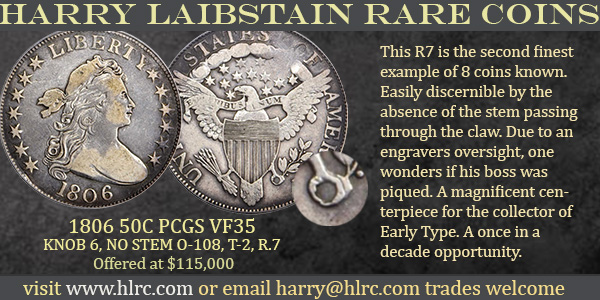
1921-S ZERBE MORGAN SILVER DOLLARS
Dan Owens submitted these thoughts on the 1921-S Zerbe Morgan Dollars. Thank you! -Editor
1921-S Zerbe Morgan Silver Dollars.
In Silver Dollars Struck Under the Pittman Act of 1918, Roger W. Burdette wrote after a 17 year hiatus, Morgan silver dollars were coined at the San Francisco Mint on April 21st. They were first delivered to the Paying Clerk on the 22nd and on May 9th, they were released to the San Francisco public. Also, see Farran Zerbe's comments below.
Zerbe, who was the President of the Pacific Coast Numismatic Society handed out some examples of these silver dollars to his fellow members at the group's meeting on May 17th. This was confirmed by David W. Lange who studied the Society's notes. Lange stated that the coins distributed by Zerbe were described as “specimen strikings”, but it is not certain whether that term was used as it is today in reference to specially made coins or simply meant “examples” of ordinary strikings.

The July 1921 edition of the Numismatist documented the May 17th meeting on pages 309-310, and described the 1921-S silver dollars obtained and passed out by Zerbe as “carefully handled, specially selected specimens.”
This points in the direction of Zerbe hand selecting these coins with a collector's eye for their quality, perhaps from a roll or two obtained at the San Francisco Mint's Cashiers counter or a local bank. If they were in fact special strike coins, why didn't he mention it in the article below when his memory was less than a day or two old?

The Numismatist June 1921, pg. 246
The first of the resumed coinage of silver dollars, dated 1921, were released from the San Francisco Mint on May 9, on instructions from Washington to supply requests for small quantities. Distribution was limited to not more than 100 in one lot. Silver dollars, seldom seen in most parts of the country, continue in common circulation in San Francisco. It is presumed a large release of the new dollars would drive the old ones from circulation. The new dollars are particularly to take the place of those melted to assist our allies in the war and thereby restore silver certificates to circulation. The new coinage is a continuation of the old type, which is best known as the “Bland Dollar,” receiving its name from the legislation fathered by the late Richard P. Bland.
A comparison of the present S mint 1921 dollar with those dated from 1878, the first of the “Bland Dollars” to 1904, when silver dollar coinage was discontinued. shows that the dies are from a new hub, producing coins that differ in several particulars from previous coinages, probably not enough to be discernible by many except by comparison, which will show a little contraction and expansion here and there with characters for better balancing, and a smoothing of detail that tends to improvement and produces a more finished appearing coin.
Among the most noticeable differences is the softening of the shadow line from eye to chin of the Liberty head, particularly around lower lip; and, on reverse, the eagle's wings do not extend so close to edge, the wing at right curves out from body, showing clear field between it and the neck, the stars that divide the legend are a trifle larger, and the ends of ribbon tie in wreath are more clearly defined. Instead of the outer border joining the edge in sharp turn, it is rounded, and makes the reeding appear a trifle shorter. Several of the 1921 dollars before me are all the fraction of a millimeter larger in diameter than in previous coinages; they will not readily pass through the opening for the genuine coin test in a Berrian counterfeit detector, a device that was in common use when silver dollars and gold coin were in general circulation.
The mint mark S, while in the same position as of old, is much smaller and seems to bear out an impression of mine that it has been the disposition of the Government in late years to make the mint mark on all our coins less distinct than formerly.
San Francisco, May 10, 1921. Farran Zerbe
COINS AND HEALTH: AMULETS
David Pickup submitted this article about amulets in his series on coins and health. Thank you! -Editor
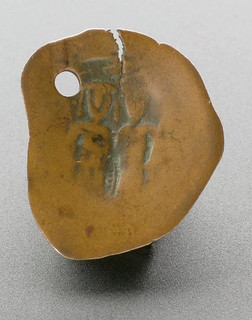 AT RIGHT: Science Museum Group. Coin amulet to protect against smallpox. A665893 Science Museum Group Collection Online. Accessed June 19, 2020.
https://collection.sciencemuseumgroup.org.uk/
AT RIGHT: Science Museum Group. Coin amulet to protect against smallpox. A665893 Science Museum Group Collection Online. Accessed June 19, 2020.
https://collection.sciencemuseumgroup.org.uk/
objects/co103143/coin-amulet-to-protect-against-smallpox-coin
.
It is sometime since we were able to visit coin dealers and rummage through their stock. Imagine you are at your favourite coin dealer looking through their trays of coins for sale. I expect you do dream of touching the real thing –I mean the coins not the dealer! You see an interesting coin which you recognise as fairly rare and not in bad condition, then you notice some idiot has put a hole through it. Despite the low price because of the hole you pass and go for something better. Stop for a moment and wonder why it has a hole. Perhaps it was an amulet to guard the wearer against illness. The coin which is illustrated a worn, saucer-shaped Byzantine coin used as an amulet against smallpox. The practice of carrying amulets good health through protection against disease has an extremely long history. Many Byzantine coins had religious images which people thought would bring good health. Some people thought that the green colour copper goes was especially healthy.
The following are medallions especially manufactured not converted coins.
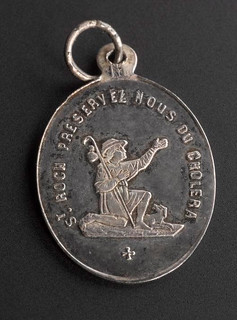 AT RIGHT: Science Museum Group. Amulet of Saint Roch to protect against cholera. A677223 Science Museum Group Collection Online. Accessed June 19, 2020.
https://collection.sciencemuseumgroup.org.uk/
AT RIGHT: Science Museum Group. Amulet of Saint Roch to protect against cholera. A677223 Science Museum Group Collection Online. Accessed June 19, 2020.
https://collection.sciencemuseumgroup.org.uk/
objects/co68714/amulet-of-saint-roch-to-protect-against-cholera-amulet.
This is medallion involving the protection of St. Roch against cholera, France, 1820-1880. It would have been hung on a thread or a chain and worn around the neck, The reverse shows St Roch (1295-1327), who was believed to cure sufferers of the plague and later other diseases, such as cholera. There are also examples of medallions designed to be worn from Russia where Cholera caused the deaths of millions of lives in the last and Nineteenth centuries.
I realise I am now encouraging dealers to increase prices for coins that have been holed as they have a historical interest! I do not see anyone producing a medallion to guard against coronavirus. We live in an increasingly cashless society so perhaps coins will go out of use completely and only carried as mementos! Coins still bear religious motifs so possibly they may become amulets?
Follow the links to read David's earlier articles:
KING GEORGE'S RECOVERY
(https://www.coinbooks.org/v23/esylum_v23n24a30.html)

PRIDE MONTH BRITISH MUSEUM NUMISMATICS
Some numismatic items are among the objects featured by the British Museum for Pride Month this year. -Editor
What better time than Pride Month to look back at queer history through the ages?
It's why the British Museum in London chose the month of June to reveal five new permanent objects with LGBTQ+ history that have been added to their permanent display.
“We're really pleased to be putting these five objects on permanent display as part of our ongoing efforts to better represent the full range of stories and identities that can be found in LGBTQ+ history,” said Stuart Frost, Head of Interpretation and Volunteers at the British Museum.
The British Museum has given GAY TIMES the exclusive first look at the five objects being added to their permanent display, as well as giving us the history behind each of them, which you can see below.
Bank of Duckie Nine Bob note, 2008 (Room 68). Acquired in 2017
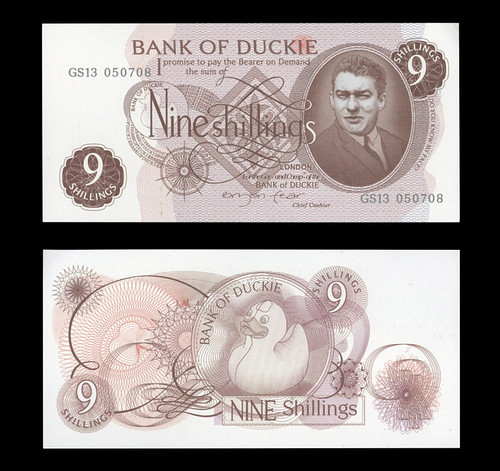
Who remembers the ten-shilling note or the ten bob note as it was once known? The note was withdrawn from circulation in 1970 and disappeared in tandem with the popular expression with which it was so closely bound, ‘as queer as a nine bob note'. This Nine Bob note was made for use in a club event organised by Duckie in 2008, Gay Shame Goes Macho. Gay Shame was a reaction to the perceived increase in gender stereotyping and commercialisation of Gay Pride events from within the LGBTQ community.
British bank notes carry a portrait of the Queen, but here instead – surprisingly – we have the East End gangster Ronnie Kray (24 October 1933 – 17 March 1995). In the margin of the cameo the image asks ‘Do you know my face?'. Ronnie was gay – something that was recognised and known by many at the time. The Kray twins – Reggie and Ronnie – were sentenced to life imprisonment in 1969. A ten shilling note also usually carries a depiction of Britannia but here we have a rubber duck instead. Yet, for all these changes the design skilfully evokes the appearance of the original ten shilling note.
Medal of Chevalier d'Eon (Room 2). Acquired c1860
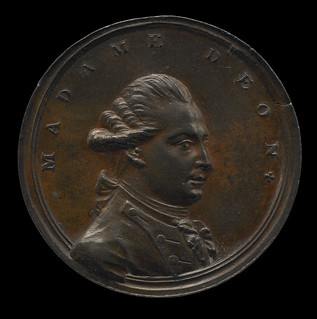 This small bronze medal – issued in 1777 – and part of the collection of Edward Hawkins (1780-1867) which the British Museum purchased in 1860. It depicts a remarkable individual, known to history as the Chevalier d'Eon. One side of the medal carries a portrait of the Chevalier as a man – but if you look closely, you'll see the inscription above the portrait reads Madame D'Eon.
This small bronze medal – issued in 1777 – and part of the collection of Edward Hawkins (1780-1867) which the British Museum purchased in 1860. It depicts a remarkable individual, known to history as the Chevalier d'Eon. One side of the medal carries a portrait of the Chevalier as a man – but if you look closely, you'll see the inscription above the portrait reads Madame D'Eon.
D'Eon was celebrated 18th-century soldier, diplomat and spy. They lived openly as a man and as a woman in France and England at different stages of life, drawing much public interest. Charismatic and talented, the Chevalier inspired the production and circulation of images and there are large number of prints of them in the Museum's collection.
The Chevalier was born on 5 October 1728 to a minor aristocratic family in Burgundy. Bright and articulate, d'Eon worked as a spy and diplomat for King Louis XV of France in Paris. After a stint as a Captain in the French Dragoons, they were sent to London as a diplomat. They embraced London life and continued to spy for the King before falling out with a superior. The Chevalier then sought political exile in London and published secret diplomatic documents in one of the most scandalous books of the time. The controversy caused by the book meant that d'Eon became something of a celebrity in London.
There had long been rumours in both Britain and France that the Chevalier was a woman, which developed into intrusive, prurient public interest. Having acquired almost celebrity status by 1771, London bookmakers had even begun to take bets on d'Eon's gender as the public debate raged on. From late 1777 onwards – the year that our medal was produced – the Chevalier began to permanently present as a woman.
In old age, the Chevalier lived with a widowed friend, Mrs Coles, in modest circumstances. Despite the fame and notoriety that had accompanied this remarkable life, d'Eon died in poverty in May 1810, at the age of 81. Today the Chevalier is recognised as a talented and tumultuous personality, who was celebrated both as a man and as a woman during a long and eventful life. You can find out more about the Chevalier d'Eon on our website, and explore their life through a number of prints.
To read the complete article, see:
What better time than Pride Month to look back at queer history through the ages?
(https://www.gaytimes.co.uk/culture/137529/take-a-look-at-the-5-new-lgbtq-objects-added-to-the-british-museum-permanent-display/)
EBAY SELLER'S FAKE MEDAL FACTORY RAIDED
The Antiques Trade Gazette report that police raided a fake medal manufacturing operation in Derbyshire, England. -Editor
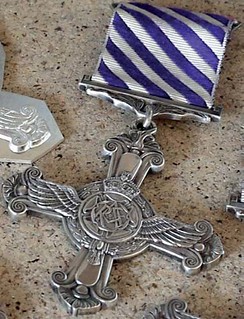 A trading standards investigation has unearthed a ‘medal factory' in Derbyshire, sparking the fear that thousands of fake military awards and badges could be in circulation.
A trading standards investigation has unearthed a ‘medal factory' in Derbyshire, sparking the fear that thousands of fake military awards and badges could be in circulation.
The fake medal and poppy badge-making operation ran from a garden shed and a spare bedroom. An investigation that began in 2016 was concluded last week with a successful prosecution.
Trading Standards officers began investigating Croft Militaria Ltd following calls from collectors suspicious that the company was offering so many seemingly rare medals.
They found “a large-scale and sophisticated operation set up to manufacture military medals” at the Ashbourne Road, Mackworth Village address of company director Henry Lyttel, aged 29.
Lyttel traded as ‘badgeman2005' on eBay. The seller was accused of offering fake gallantry medals and military badges, including Military Crosses and Distinguished Flying Crosses, along with pin badges bearing the poppy emblem, which is trademarked by the Royal British Legion.
Mark Smith, medal specialist at AH Baldwin & Sons, was among those who assisted in the four-year investigation. He said: “After accompanying a dawn raid by police and trading standards I was amazed to find what can only be described as a medal factory.
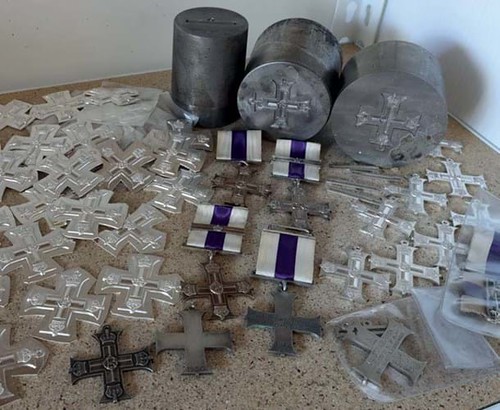
“A shed in the garden contained hundreds of faked medals, cap badges, shoulder titles and helmet plates. It was an incredible array of exceptional quality fakes, covering many regiments and units from all ages – literally hundreds of them.” Smith added: “This is a devastating blow to the medal world because these items are so good.” He believes Croft also used auction houses to sell some of the medals and badges through general sales.
The gallantry medals were manufactured from metals including pre-1940s silver and struck by a process identical to that used by the Royal Mint. Engraving and oxidising chemicals helped make them appear old.
Trading Standards officers established that Lyttel would often purchase incomplete medal groups at auction – those with provenance but typically missing the key award. He would then make any missing medals and sell on the group for much more.
Marcus Budgen, head of the medal department at Spink, added: “It is good news that this has been brought to justice for the collecting fraternity but more importantly the servicemen whose names were entangled in this case. In the first instance it is their outstanding service and sacrifice for our nation that should be remembered.
“It is possible some fake items remain in circulation. Anyone who has purchased from this individual or suspect items may be fake should seek advice from specialists in the field and contact the relevant authorities.”
To read the complete article, see:
Raid on eBay seller's 'fake medal factory' run from garden shed leaves market reeling
(https://www.antiquestradegazette.com/print-edition/2020/june/2447/news/raid-on-ebay-sellers-fake-medal-factory-run-from-garden-shed-leaves-market-reeling/)

CNN COVERS TENINO'S 2020 WOODEN MONEY
This week CNN published an article about Tenino Washington's revival of its wooden scrip during the coronavirus pandemic. They did their research, quoting Len Augsburger of NNP and Dr. Jesse Kraft of the ANS. Here's an excerpt, but see the complete article online. -Editor
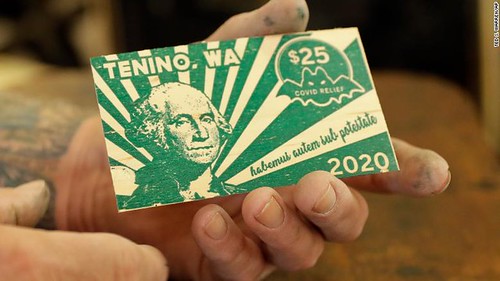
Loren Ackerman holds a piece of wooden money he printed
As businesses struggle to stay afloat during the pandemic and a record number of Americans have lost their jobs, one small city in Washington state put forth a creative solution to help its neediest residents pull through: printing their own money, out of wood.
In Tenino -- a community of less than 2,000 people halfway between Seattle and Portland -- residents who can demonstrate an economic hardship caused by the pandemic can receive up to $300 a month in wooden dollars, subsidized by a City Hall grant program.
The bills are made of wood veneer and are each worth $25. They can be used to purchase necessities and services from licensed or certified providers, as specified in the guidelines by Tenino's City Hall.
History revamped
This is not the first time the city of Tenino has resorted to printing its own money in times of economic hardship. It happened before, during the Great Recession.
The Tenino Wooden Dollar was first printed in December 1931 when the local Citizens Bank failed and all bank accounts were frozen, according to city historian Richard Edwards.
At that time, the currency was backed by the local Chamber of Commerce rather than by the local government, and was the brainchild of local newspaper publisher Don Major, who thought to use his printing press for the purpose.
Residents could sign over up to 25% of their bank deposits to the Chamber of Commerce in exchange for the alternative currency, which was also made of wood, an abundantly available material in the Pacific Northwest. The first Tenino wooden currency circulated from 1931 to 1933, and later became a collectors' item.
The fact that the new version of the Tenino dollar is also printed on wood has to do with the fact that this city "is very history aware," Edwards told CNN.
The current Tenino Wooden Dollars are printed with the same newspaper press from the 1890s that was used in the 1930s with custom engraving blocks. The machine, which resides in the Tenino Depot Museum, was used over the years to produce commemorative versions of the historic Tenino Wooden Dollar for the collectors' market, for organizations and for special events, according to Edwards.
A novel kind of scrip
Leonard Augsburger, the project coordinator of the Newman Numismatic Portal at Washington State University in St. Louis, told CNN that currency alternatives and scrip were very popular during the Depression era, especially after the 1933 Bank Holiday ordered by President Roosevelt.
"There were thousands of various scrip issues during the Depression, a lot of times coming from local municipalities, chambers of commerce, boards of education, or companies. They were all over the country and people were used to seeing them," Augsburger said.
"They had by and large disappeared once people had confidence in the banks and the regular money supply was back to normal."
The 2020 Tenino Wooden Dollar is "really intriguing," according to Augsburger, because it's not quite the same as its Depression-era ancestor. "This is sort of more akin to food stamps, where the government gives you certificates that are directly redeemable for food and primary needs."
While government assistance through social programs is well-established, the Tenino Wooden Dollar is a more direct way for a local government to provide direct aid to individuals while supporting local commerce, according to Augsburger.
"To see this done on a very local basis is novel."
Is it legal?
The authority to print money resides with the federal government, and US Dollars are the only legal tender in the country.
But is Tenino actually printing money? Jesse Kraft, an assistant curator at the American Numismatic Society, doesn't think so.
"No one is going to be held accountable for this because they are not actually creating money, as it's legally defined. These are just tokens that are creating an economic stimulus," Kraft told CNN.
"It begs the question: what is money? It really is just something that someone is willing to spend and the other person is willing to accept," Kraft added.
It's unlikely the federal government would worry about the Tenino currency unless it became much more widely used, according to Augsburger.
Creativity beyond borders
As American as it is, the Tenino experiment is receiving attention not just from other states around the country, but from all over the world, the mayor said. He has fielded media inquiries from Canada, New Zealand and Norway in recent days.
"The global interest in this story is amazing and I sincerely hope it inspires other communities to try bold new ideas," Fournier told CNN. The attention has also brought about donations from benefactors both foreign and domestic, according to Fournier.
"The generosity has been amazing."
Others are getting in touch to purchase Tenino Wooden Dollars as collectibles.
"We're getting bombarded with requests from out of the city folks that want to purchase them, and they're offering like seven times the face value." If Tenino residents were to resell their wooden dollars for a profit, Fournier would still feel like the currency met its stated purpose.
"I still think you've directly helped an individual that's been harmed by the pandemic."
To read the complete article, see:
Tenino, Washington is printing wooden money to help residents through the pandemic
(https://www.cnn.com/2020/06/20/us/tenino-washington-wooden-money-trnd/index.html)
This article shows the perspective of those helped by receiving the scrip. -Editor
Just about every business in town, from the gas station and auto-body shop to Don Juan's Mexican Kitchen, is accepting the wooden scrip. The currency, made of maple veneer, is about the thickness, size and flexibility of an index card and printed on the same 1890s-era press that once printed the Depression currency and the local newspaper. It can't be used for alcohol, tobacco or marijuana.
The businesses can redeem the scrip for real dollars at City Hall — or sell them on the side. Some merchants said they've been offered three times the face value from coin collectors around the country.
Mahlenbrei, one of about a dozen people who applied for the assistance in the program's early days, is a school bus driver. The company she works for has continued paying her for her normal routes, she said, so she can't collect unemployment. But the extra trips that usually double her base income — driving students on field trips and teams to games — have dried up, along with their compensation.
She had to begin taking Social Security early, reducing the payments she will receive. And the company that provided her hearing aid has repossessed it because she can't make the monthly payments.
She used $150 of her first monthly aid to pay her utility bill.
“When they came up with this, I was the first person in line down there,” said Mahlenbrei, 63. “I have no money. This really helps.”
To read the complete article, see:
Tenino merchants are taking wooden nickles during pandemic
(https://www.heraldnet.com/northwest/tenino-merchants-are-taking-wooden-nickles-during-pandemic/)
To read earlier E-Sylum articles, see:
TENINO IS STILL PRINTING WOODEN MONEY
(https://www.coinbooks.org/v23/esylum_v23n11a23.html)
TENINO REVIVES WOODEN MONEY
(https://www.coinbooks.org/v23/esylum_v23n19a35.html)
TENINO'S 2020 WOODEN MONEY
(https://www.coinbooks.org/v23/esylum_v23n24a35.html)
FORREST FENN TREASURE PHOTOS RELEASED
Dick Hanscom passed along a Daily Mail article following up on that Forrest Fenn treasure story. Fenn has released a photo that has left skeptics (like me) unconvinced. -Editor
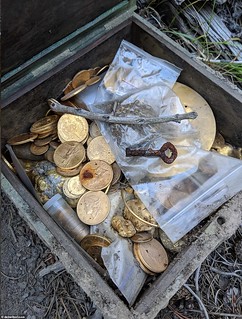 Eccentric art dealer and author Forrest Fenn has released new photos of the $1million bronze treasure chest he says was discovered deep in the Rocky Mountains earlier this month.
Eccentric art dealer and author Forrest Fenn has released new photos of the $1million bronze treasure chest he says was discovered deep in the Rocky Mountains earlier this month.
Thousands of thrill-seekers were drawn to the Rockies in search of the prize since Fenn, now 89, announced the treasure hunt in his 2010 memoir, and at least five men lost their lives trying to find it.
The announcement drew skepticism from critics who questioned how Fenn failed to provide basic details about where the treasure was found and by whom.
Fenn sought to silence the speculation by releasing three photos of the unearthed treasure on Monday through a blog site dedicated to the search.
The first photo, which Fenn said was taken 'not long after' the discovery, shows the chest caked in mud and sitting on a trail. Inside is a pile of gold coins and gold nuggets, a couple plastic bags holding unidentifiable objects and a thoroughly-rusted key.
In the second photo, Fenn is seen sifting through the contents of the newly-cleaned chest. Stacks of gold coins and other metallic artifacts were scattered across the table.
The third photo shows Fenn wearing a heavily-tarnished silver bracelet that was in the chest.
To read the complete article, see:
PICTURED: Forrest Fenn's $1million treasure chest after it was allegedly found by anonymous explorer from 'back East' following decade-long hunt that killed five men and some believe was a hoax
(https://www.dailymail.co.uk/news/article-8432053/PICTURED-Forrest-Fenns-1million-treasure-chest-anonymous-explorer.html)
To read other articles, see:
Forrest Fenn Treasure Photos Leave Hoax Claims Open
(https://www.westword.com/news/forrest-fenn-treasure-photos-dont-convince-doubters-11727941)
Millionaire Forrest Fenn Shares Apparent First Photos of Mysterious Treasure After Prize Is Found
(https://people.com/human-interest/forrest-fenn-first-photos-treasure/)
Forrest Fenn finally shared photos of his discovered treasure amid doubts that it was actually found
(https://www.cnn.com/travel/article/forrest-fenn-treasure-chest-pictures-trnd/index.html)
FOOL'S GOLD Inside the $1million treasure chest after it was finally ‘found' following a 10-year hunt that killed five
(https://www.thesun.co.uk/news/11891104/treasure-chest-found-hunt-that-killed-five/)
Forrest Fenn's treasure estimated to be worth $1 million
(https://www.msn.com/en-us/video/peopleandplaces/forrest-fenn-s-treasure-estimated-to-be-worth-1-million-appraiser/vi-BB15MBZK)
To read the earlier E-Sylum article, see:
FORREST FENN REPORTS TREASURE FOUND
(https://www.coinbooks.org/v23/esylum_v23n24a37.html)

